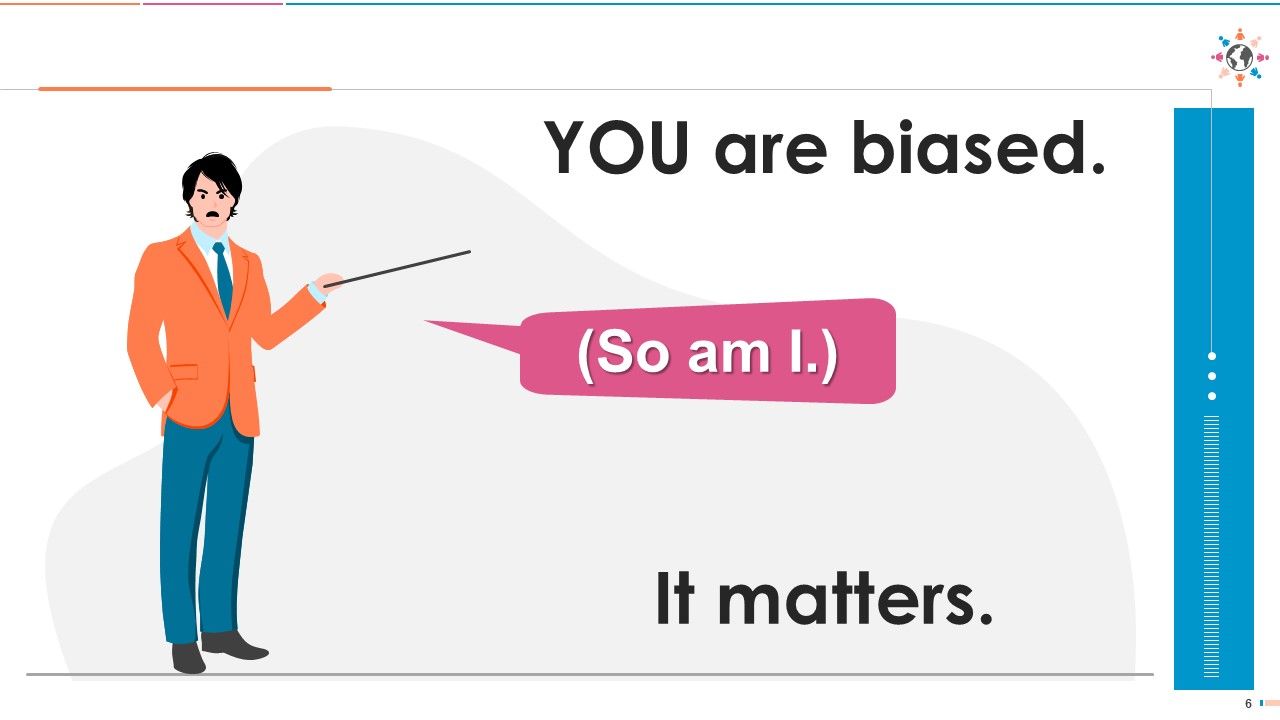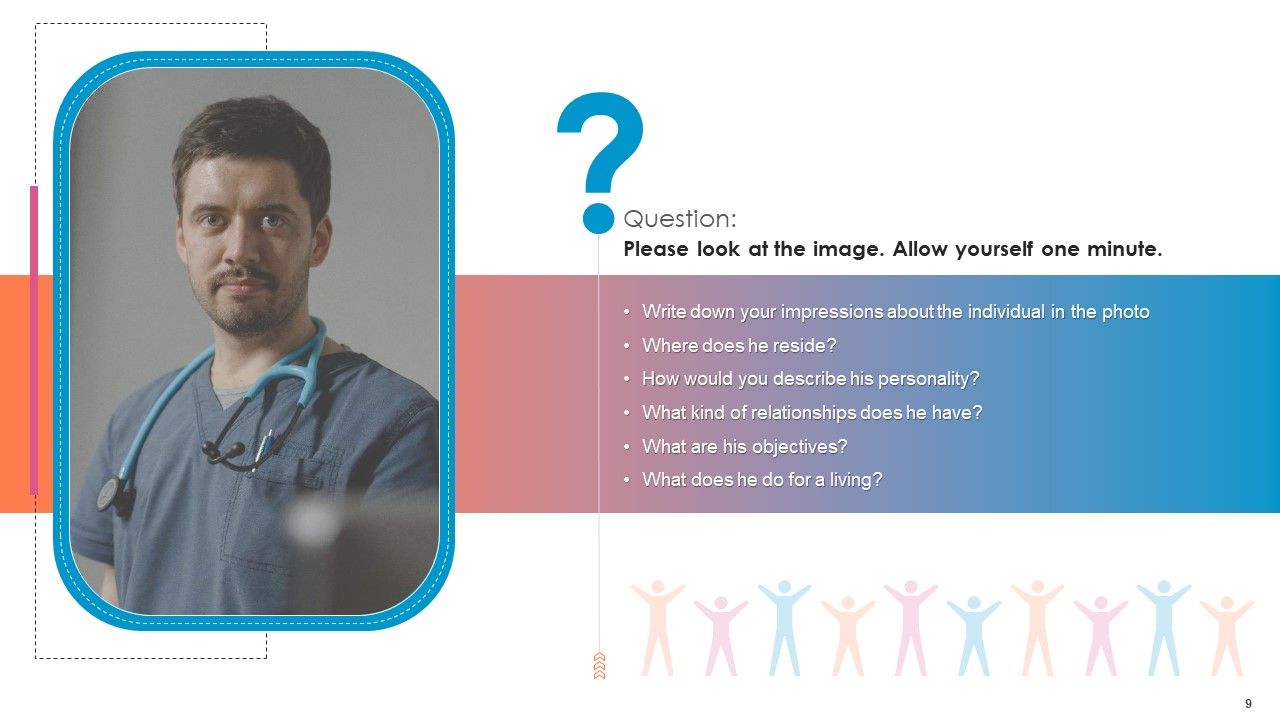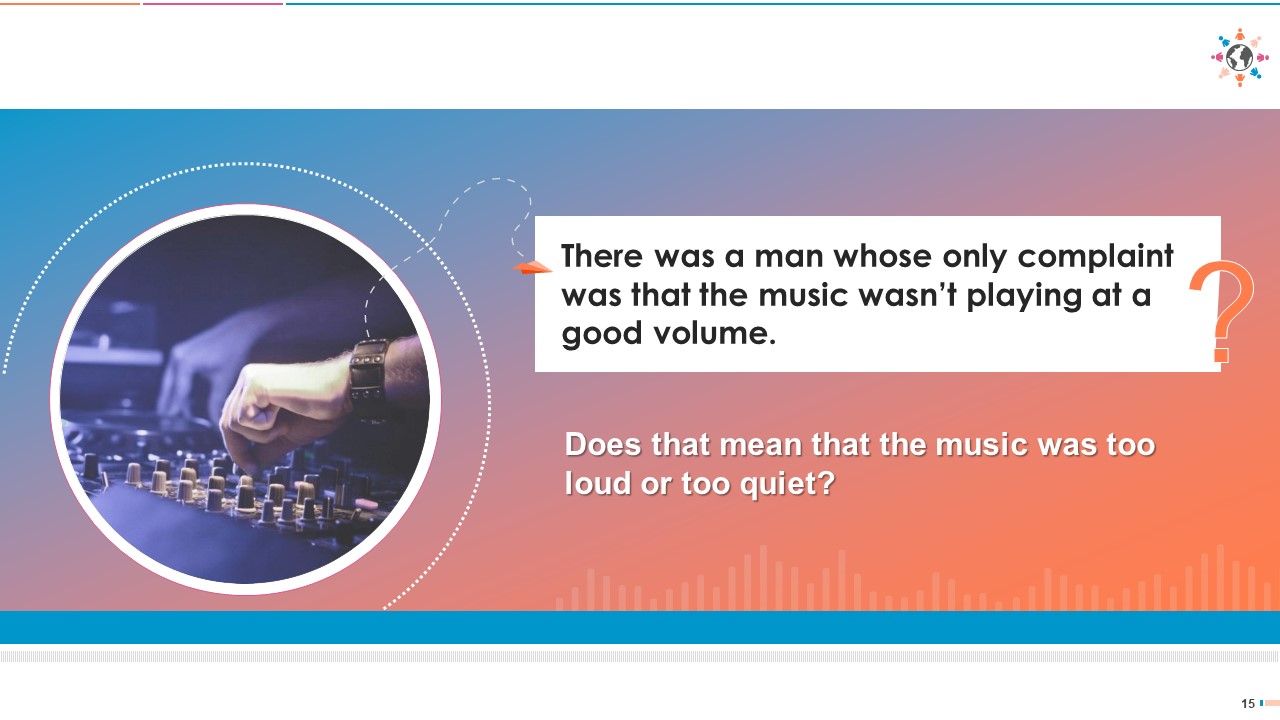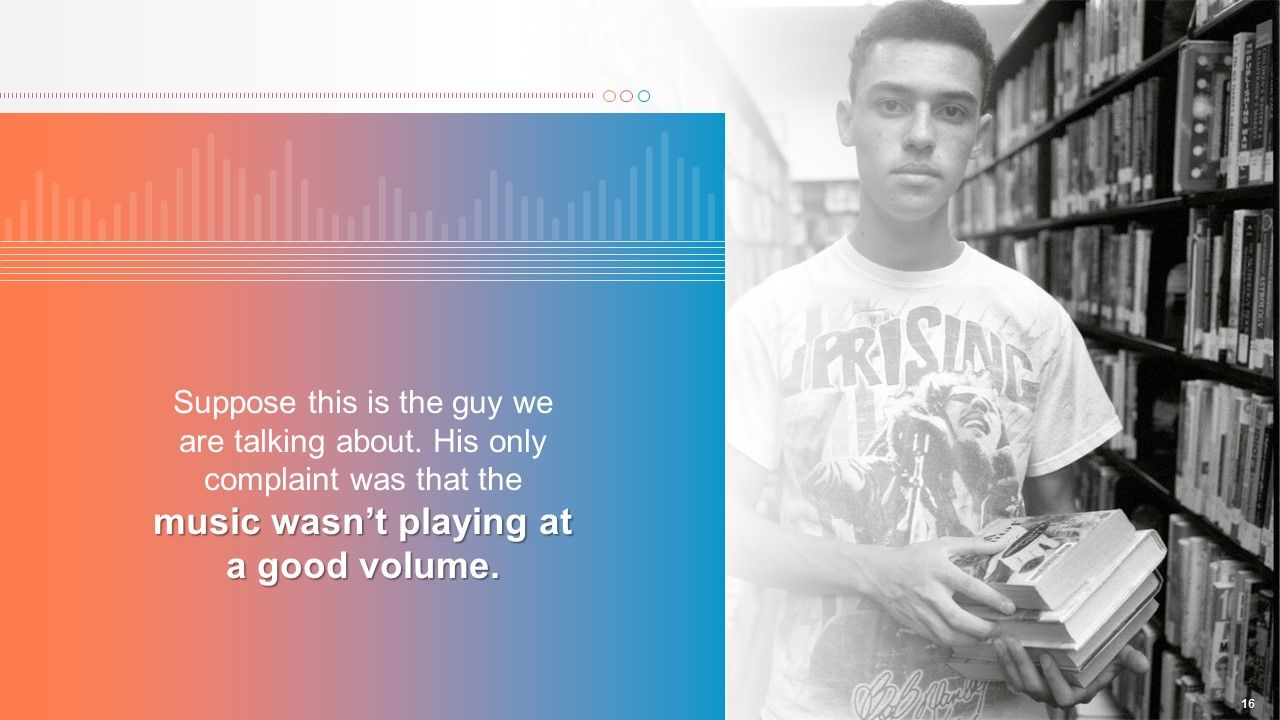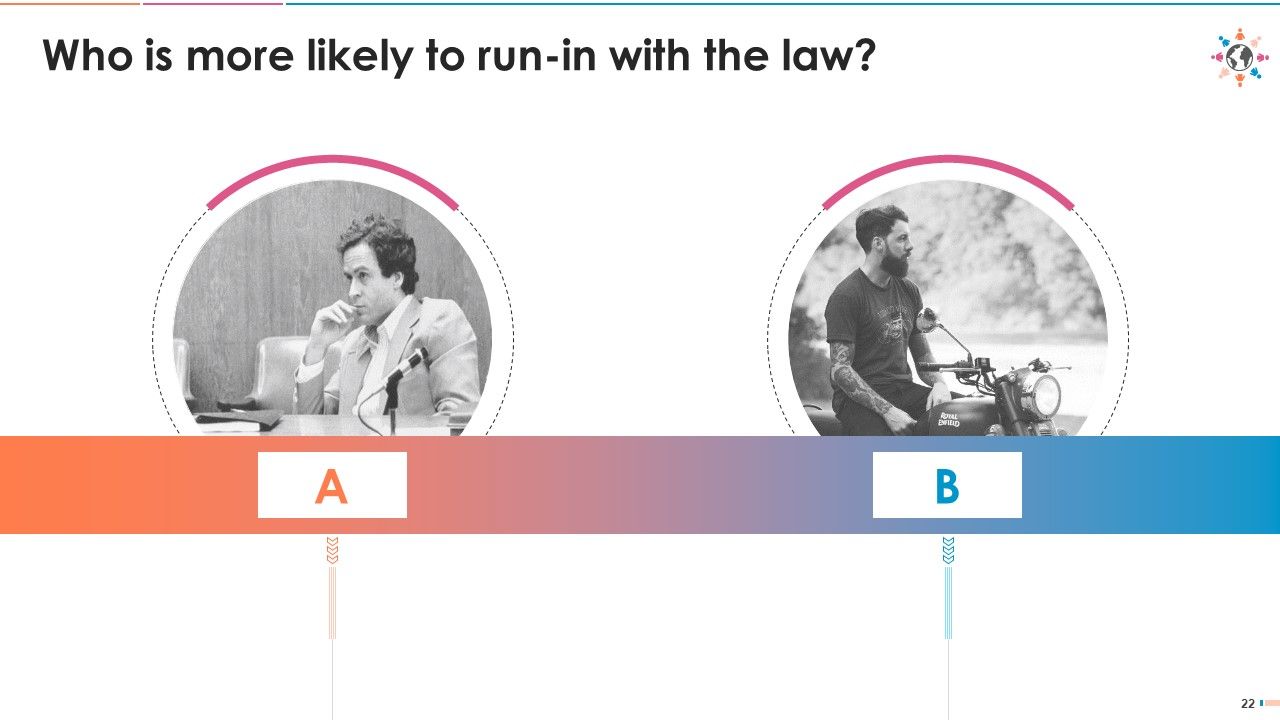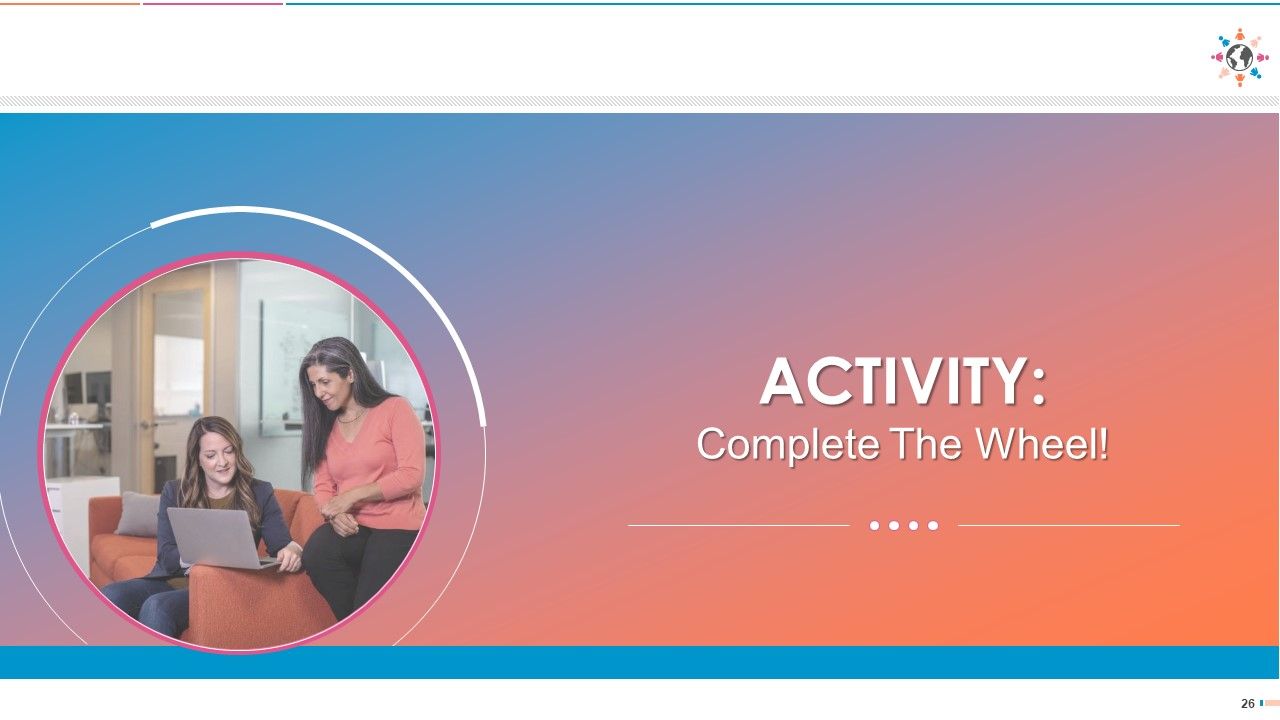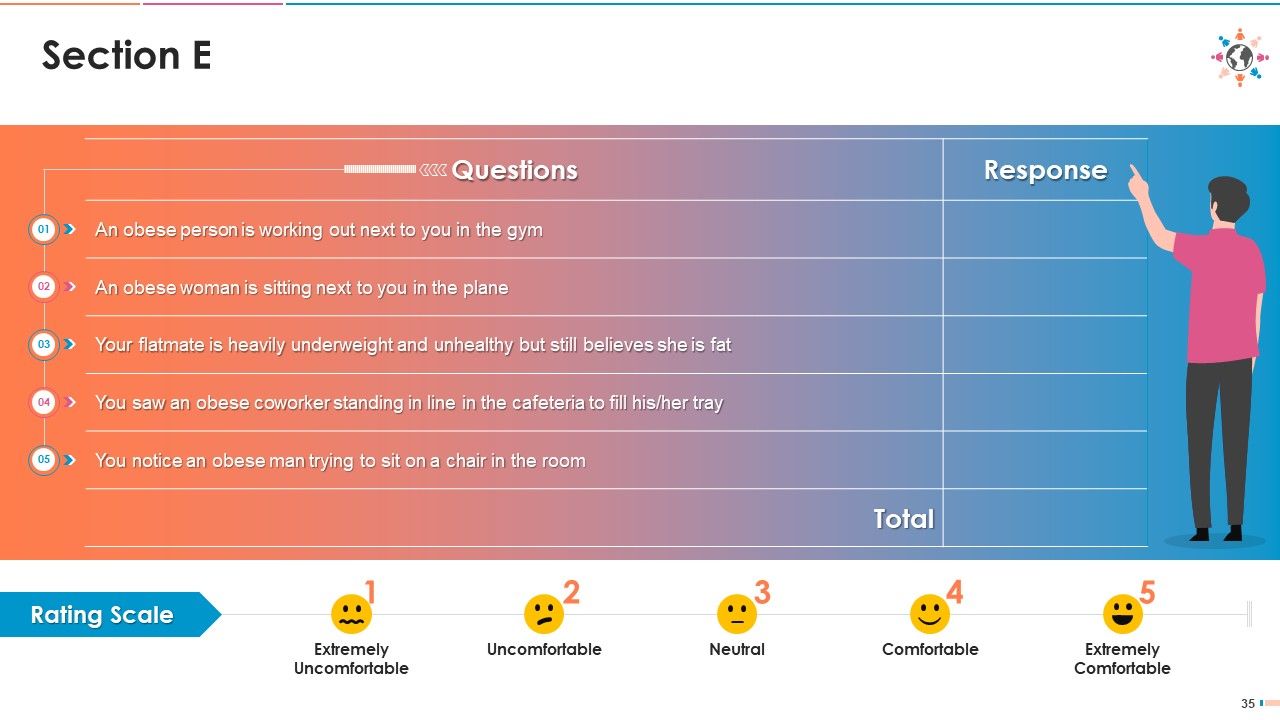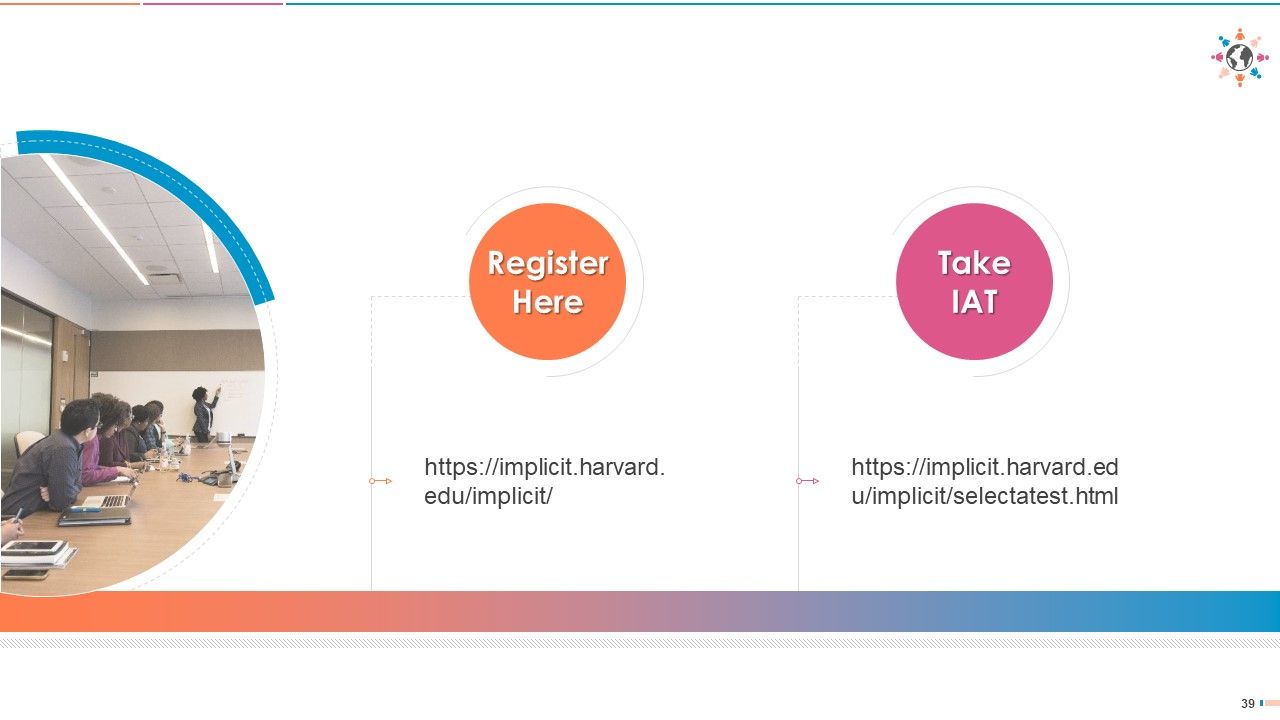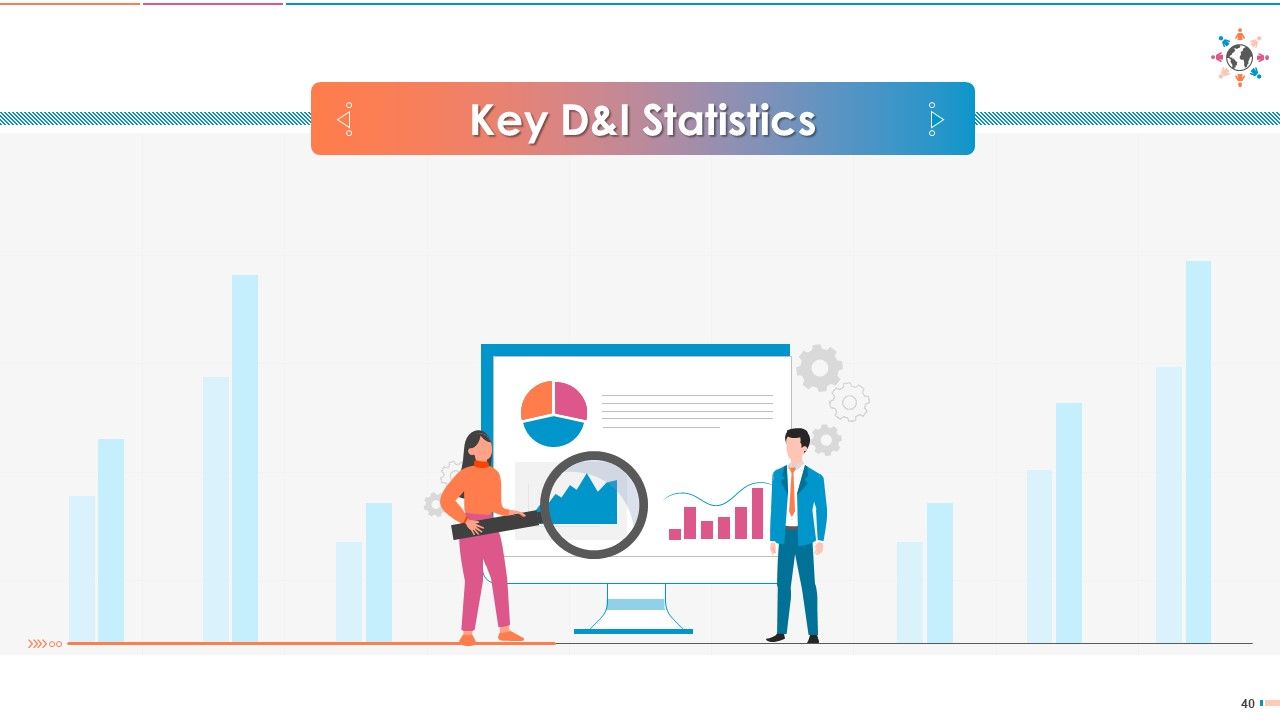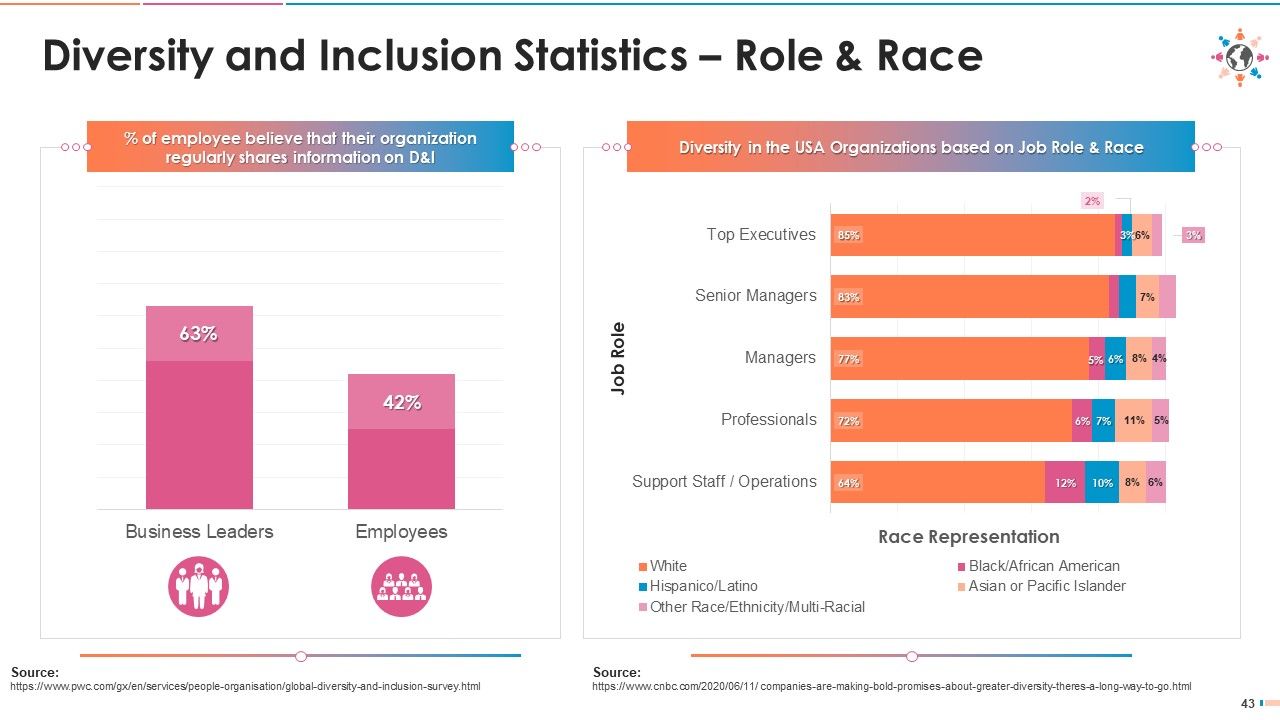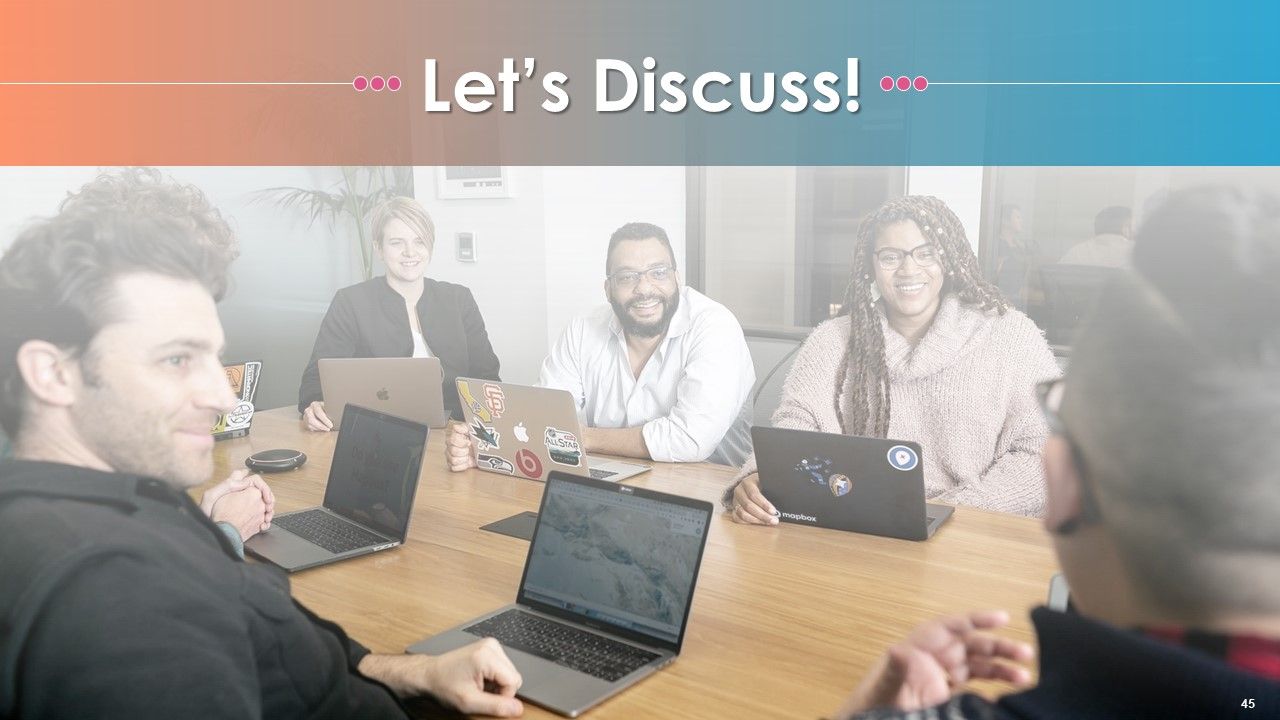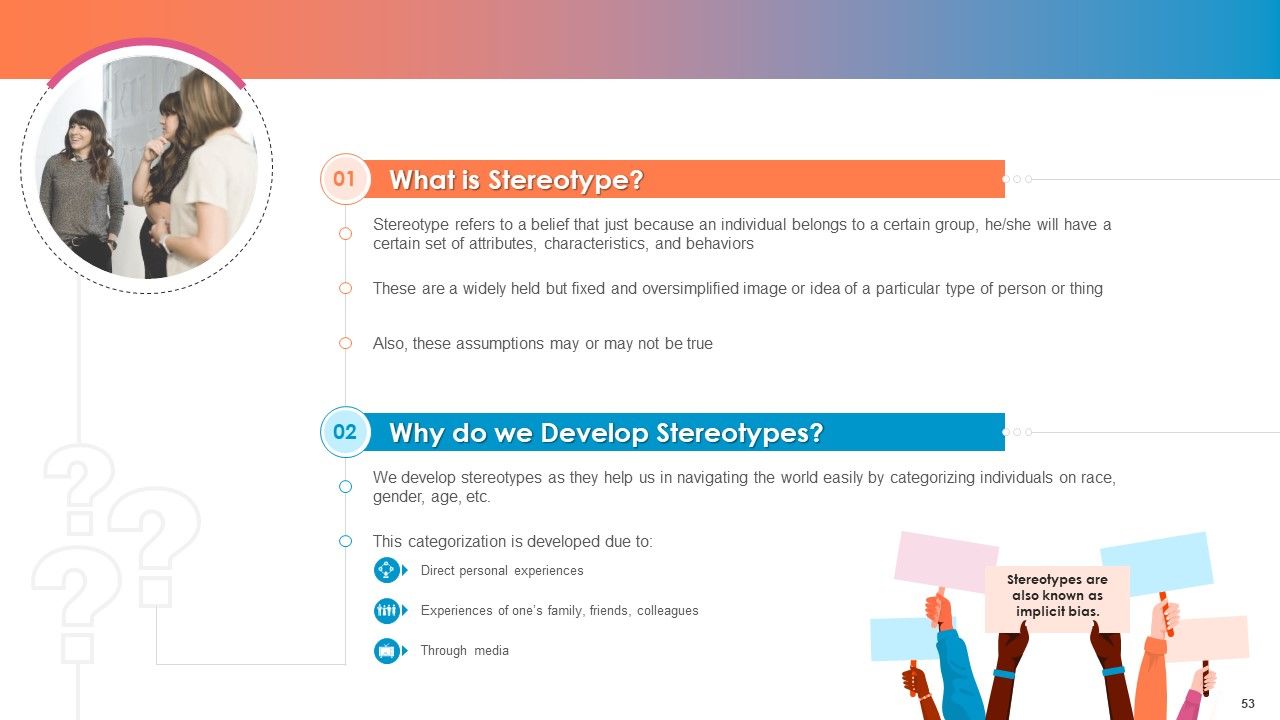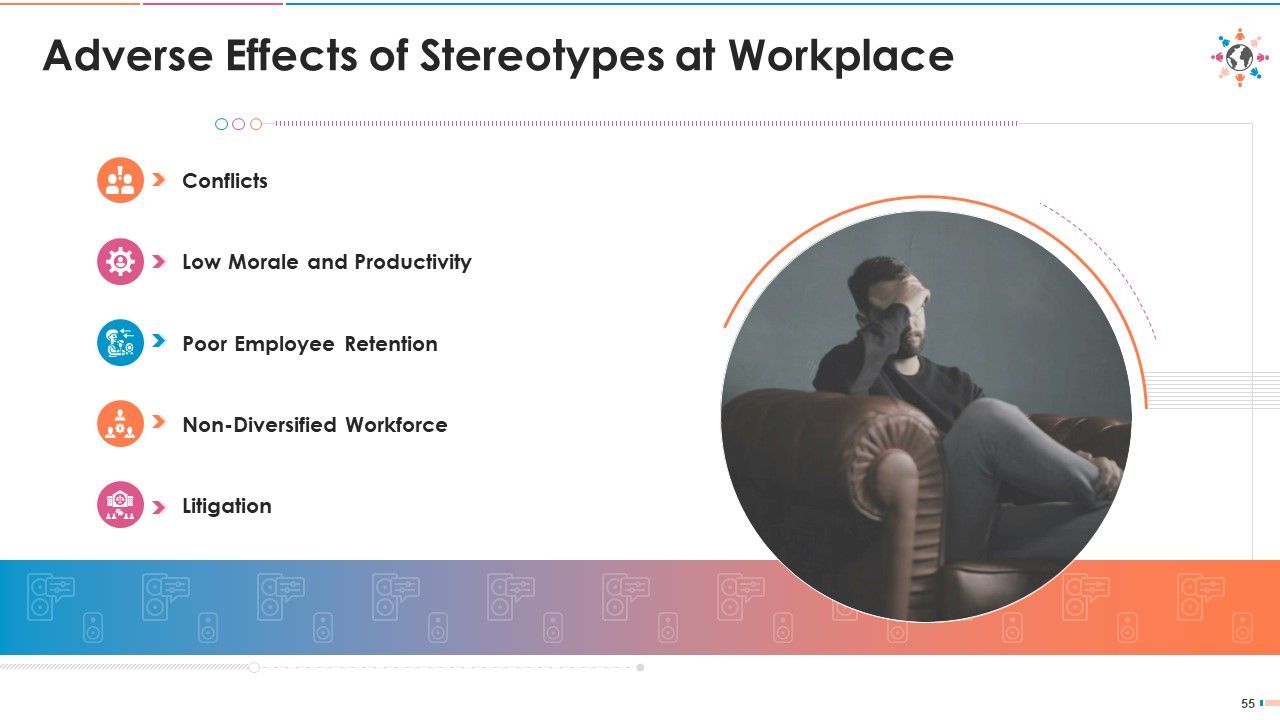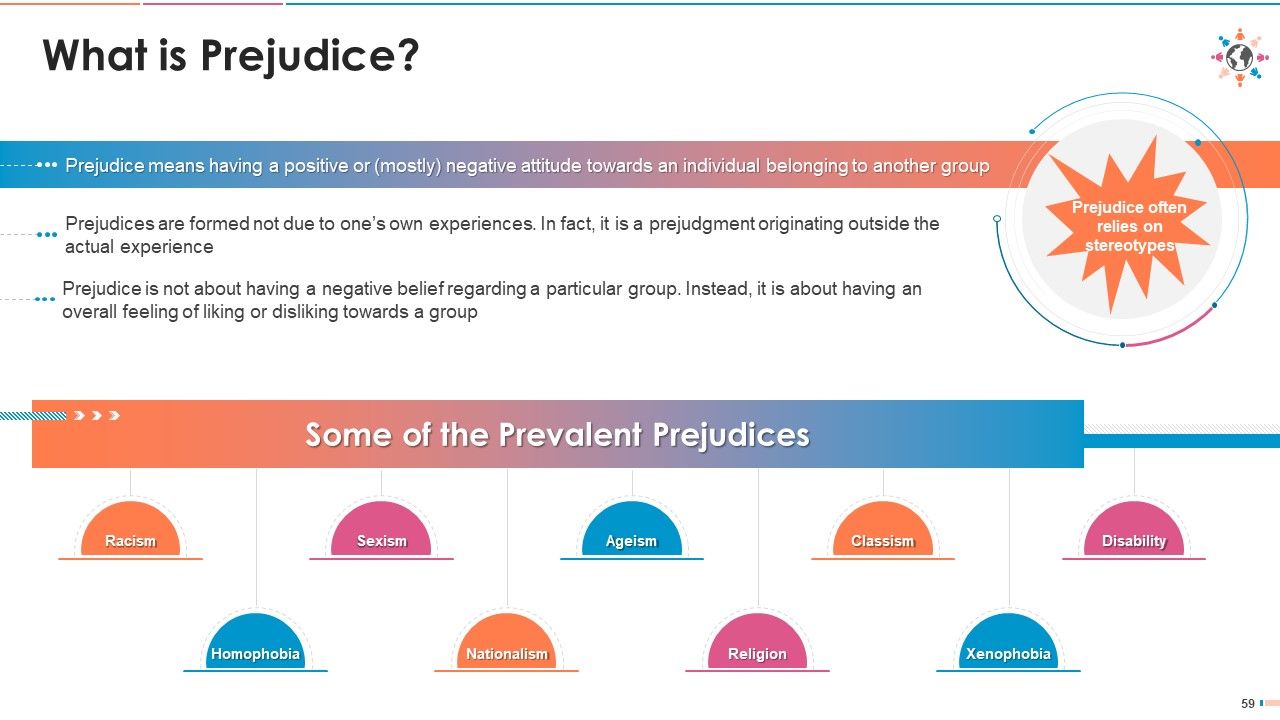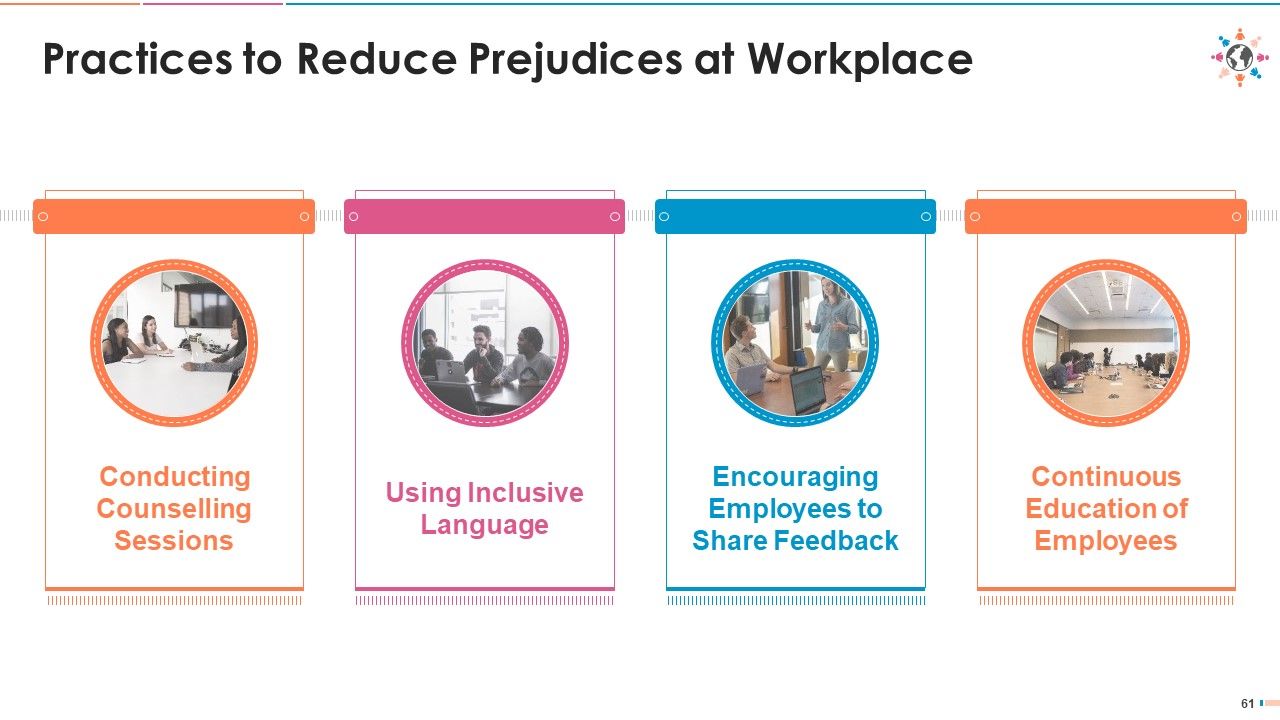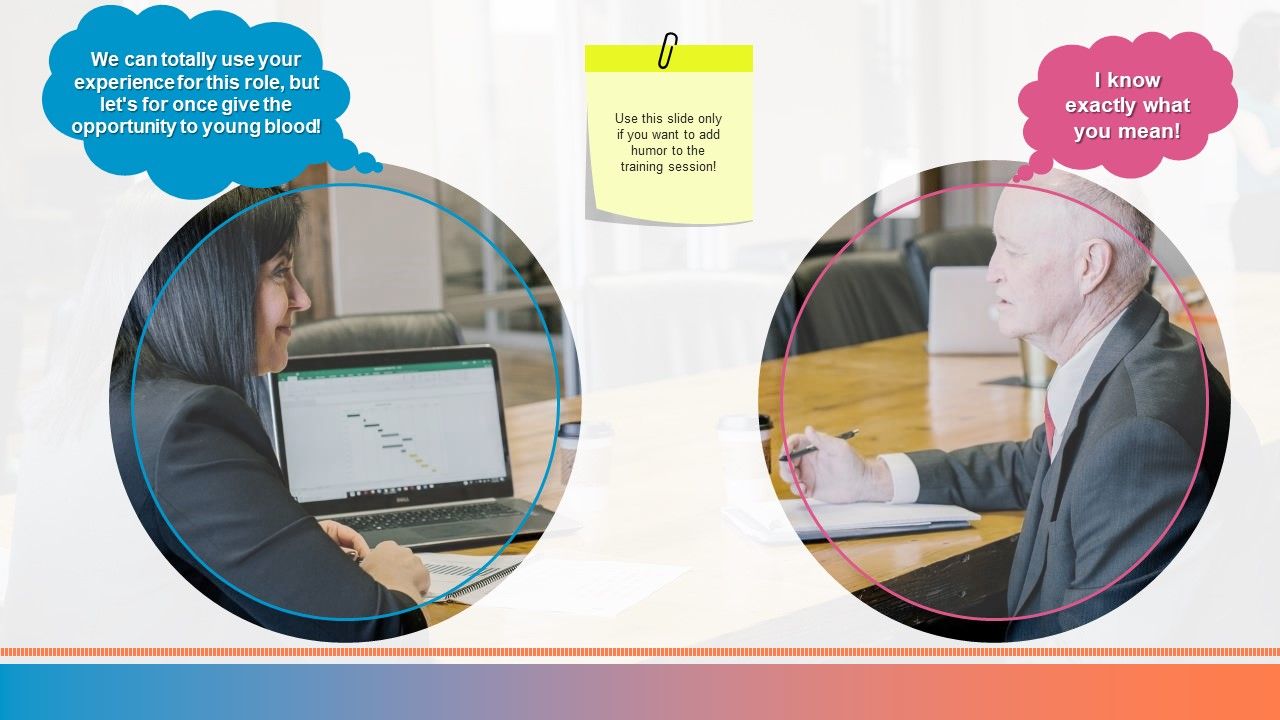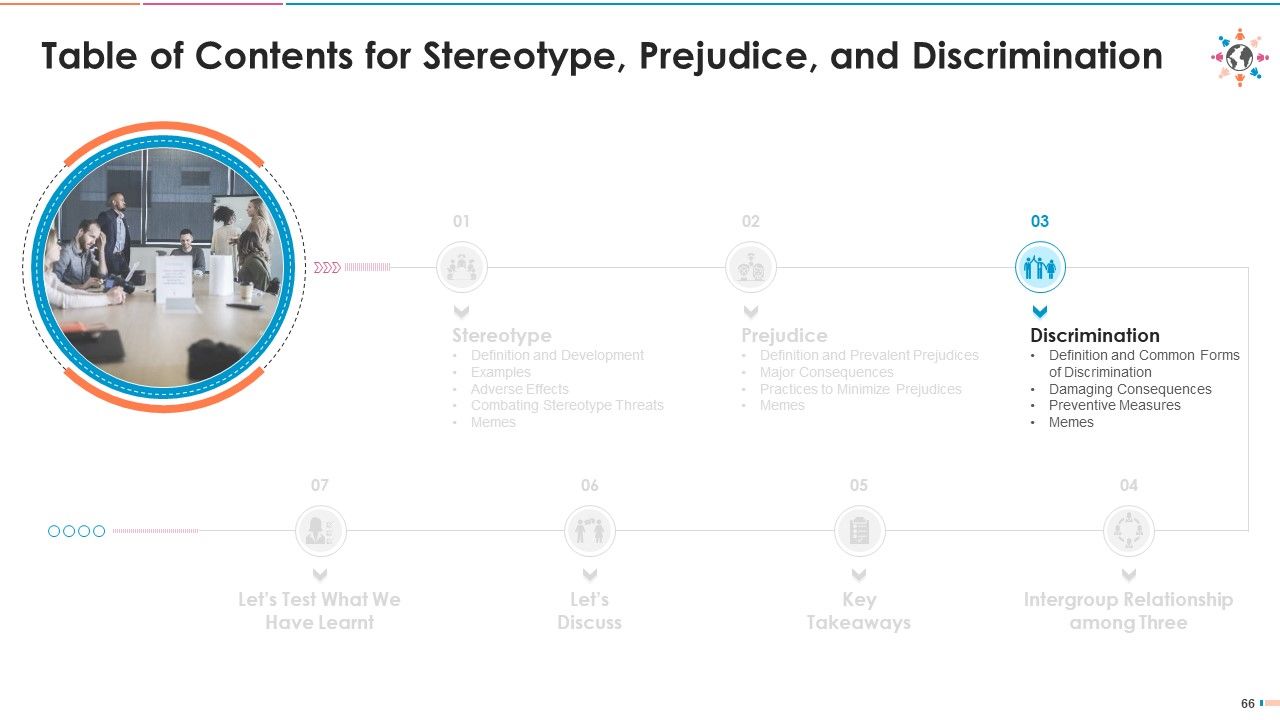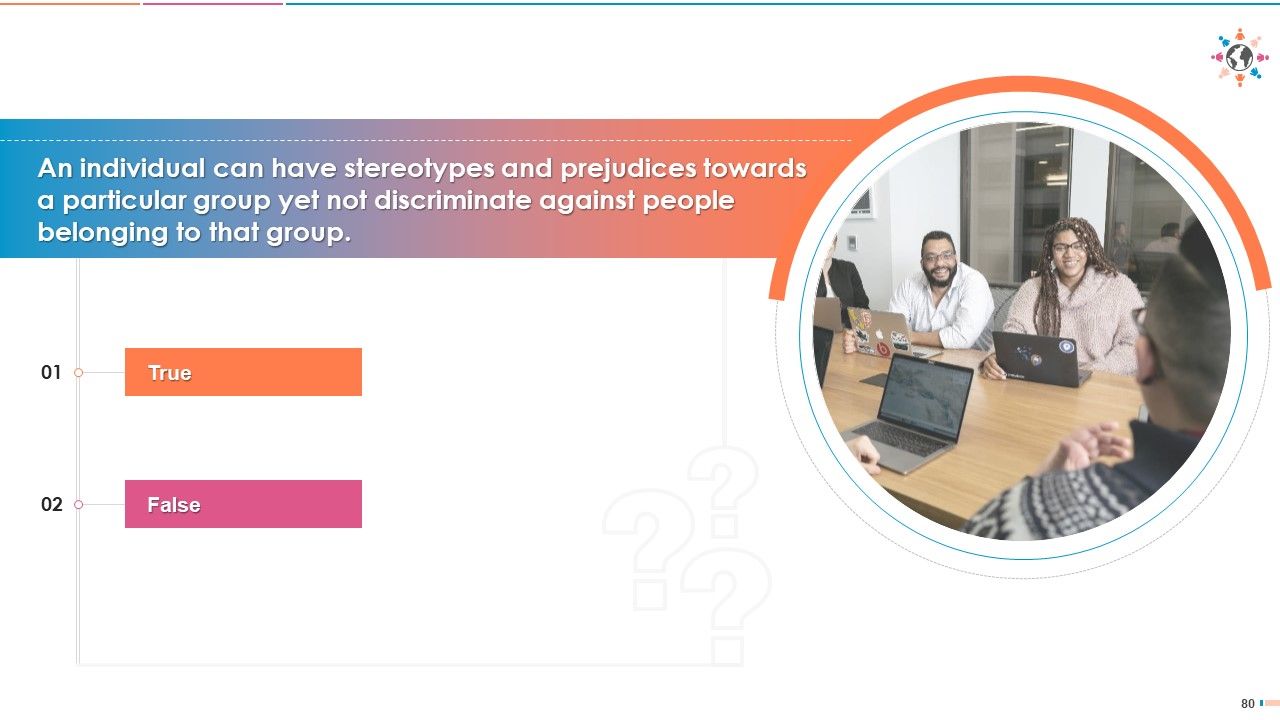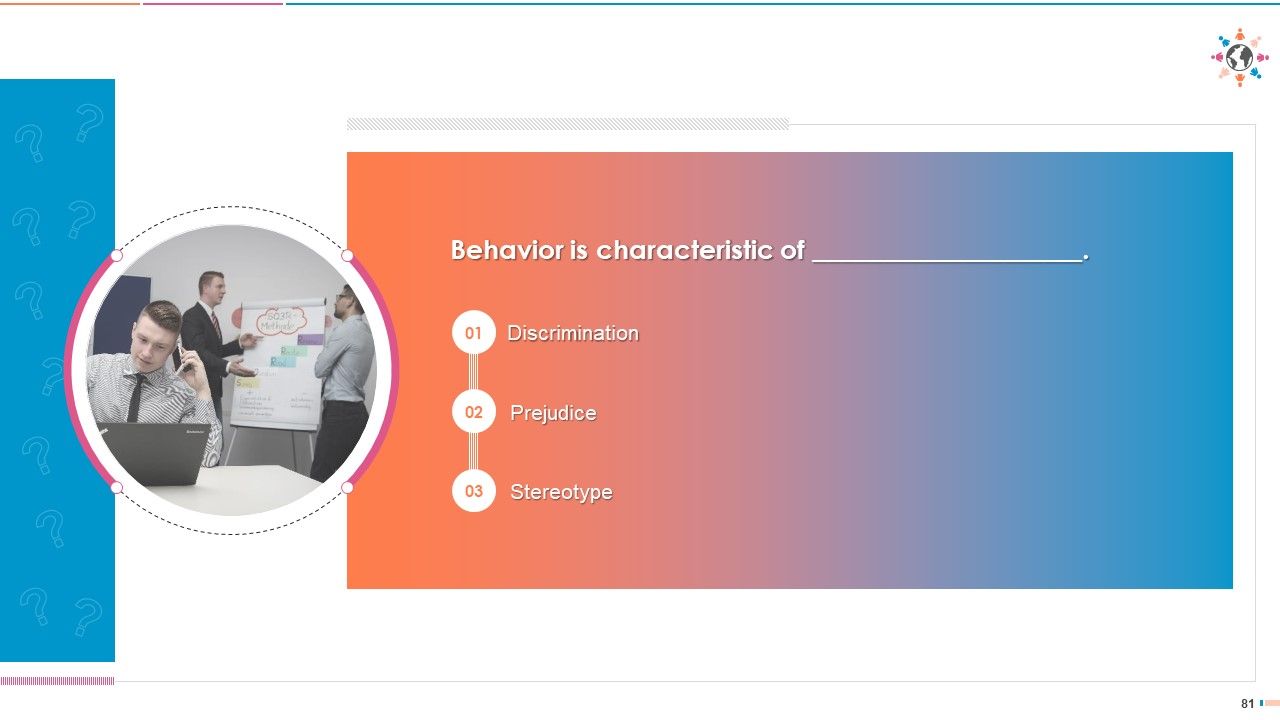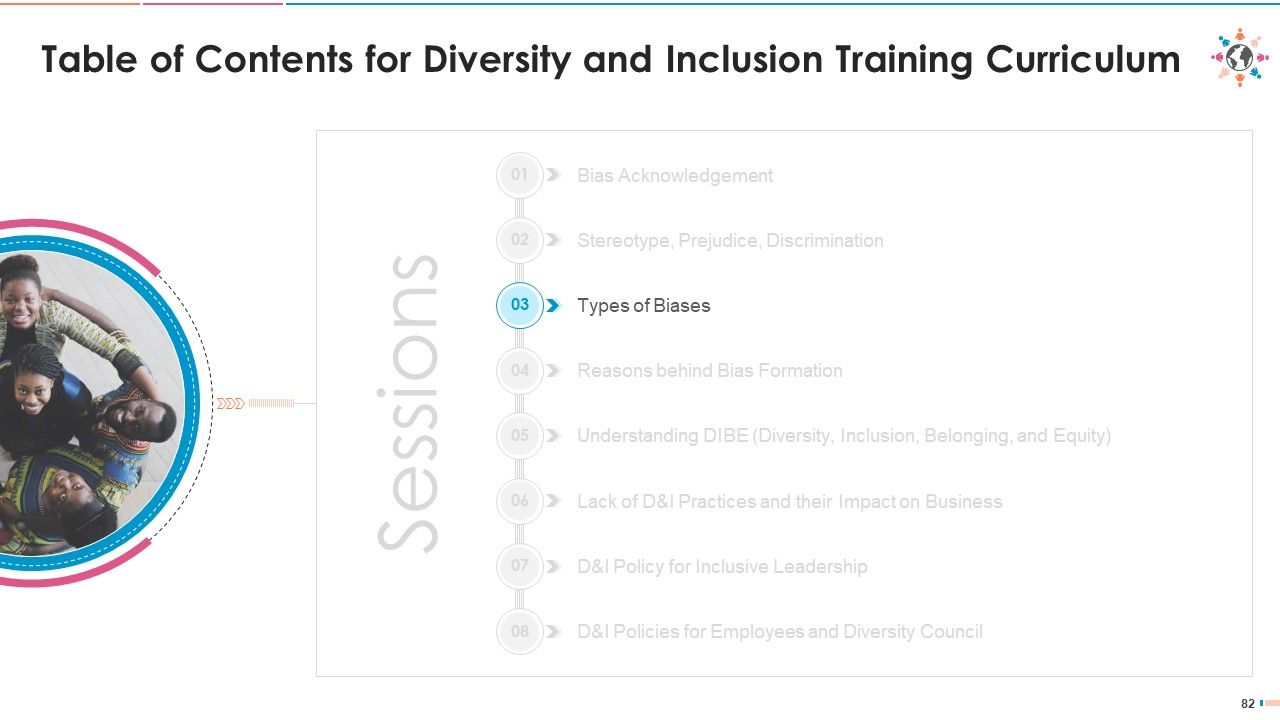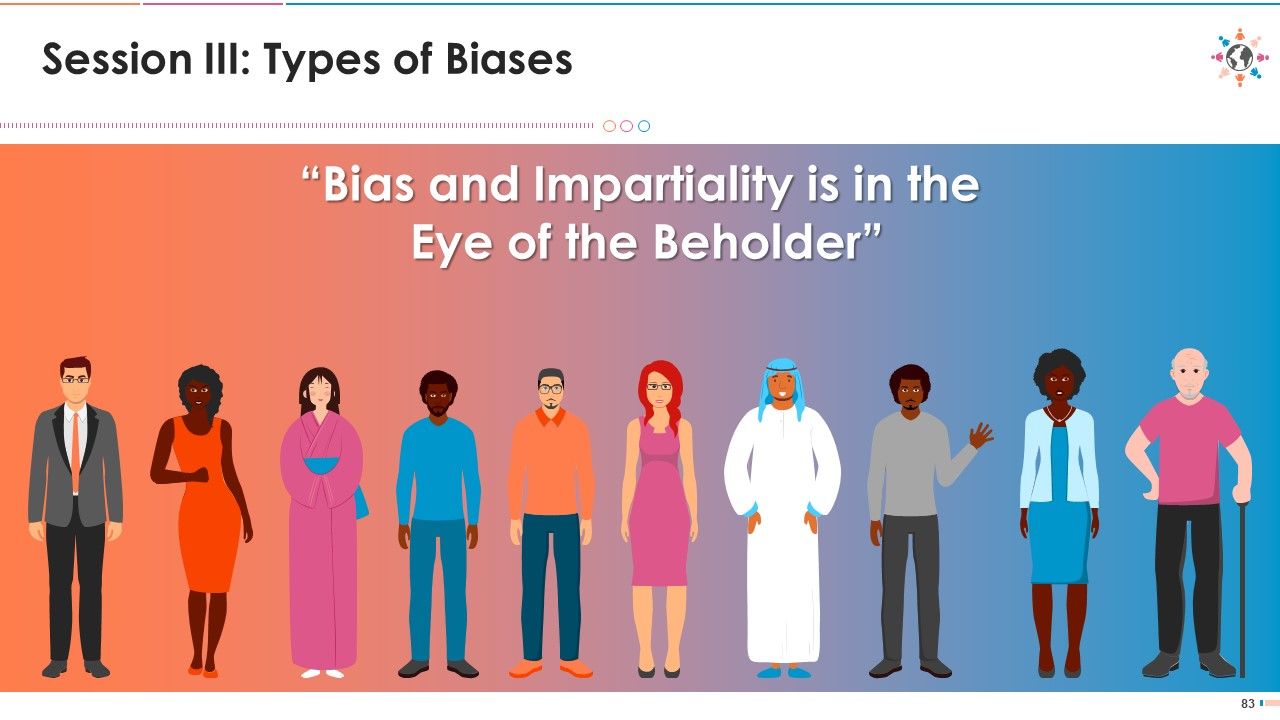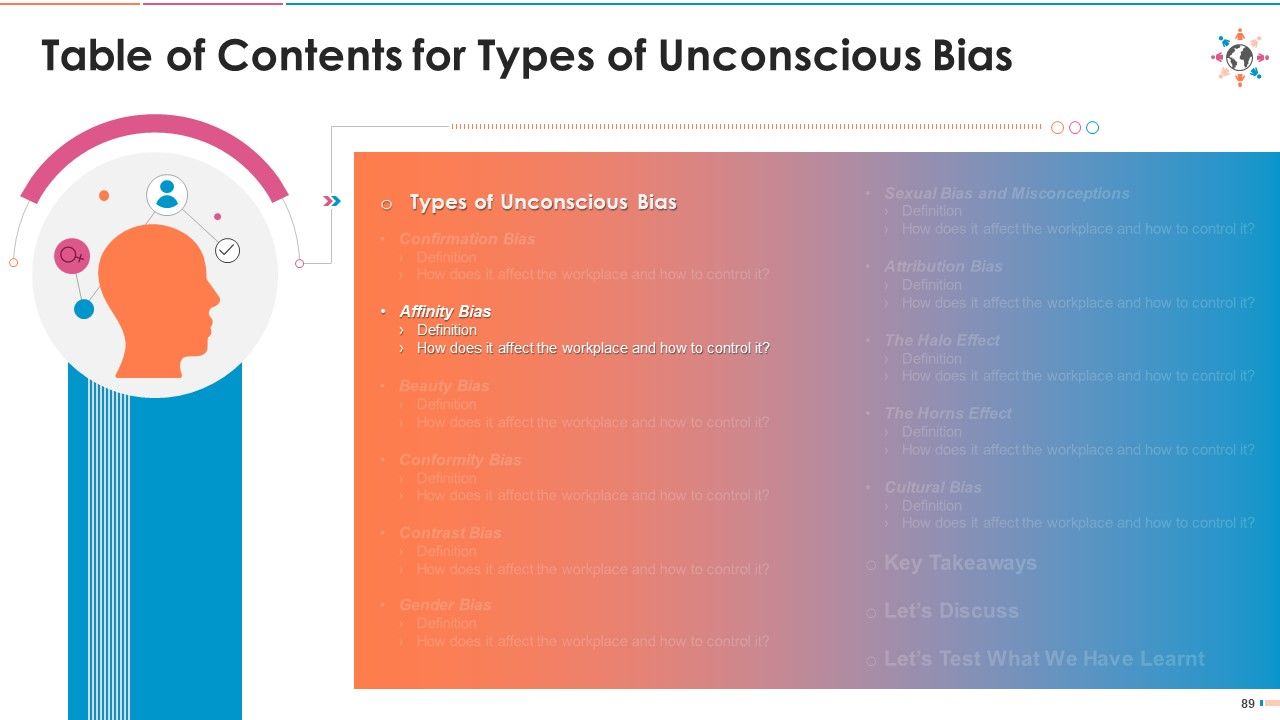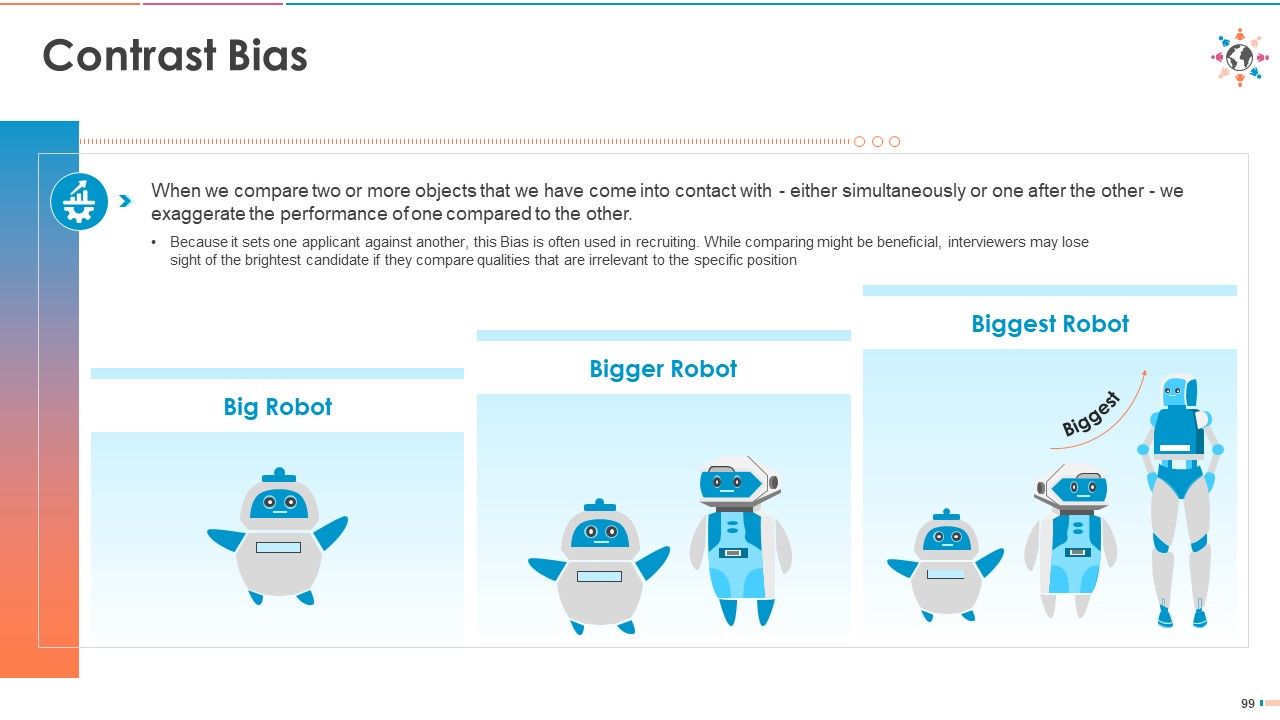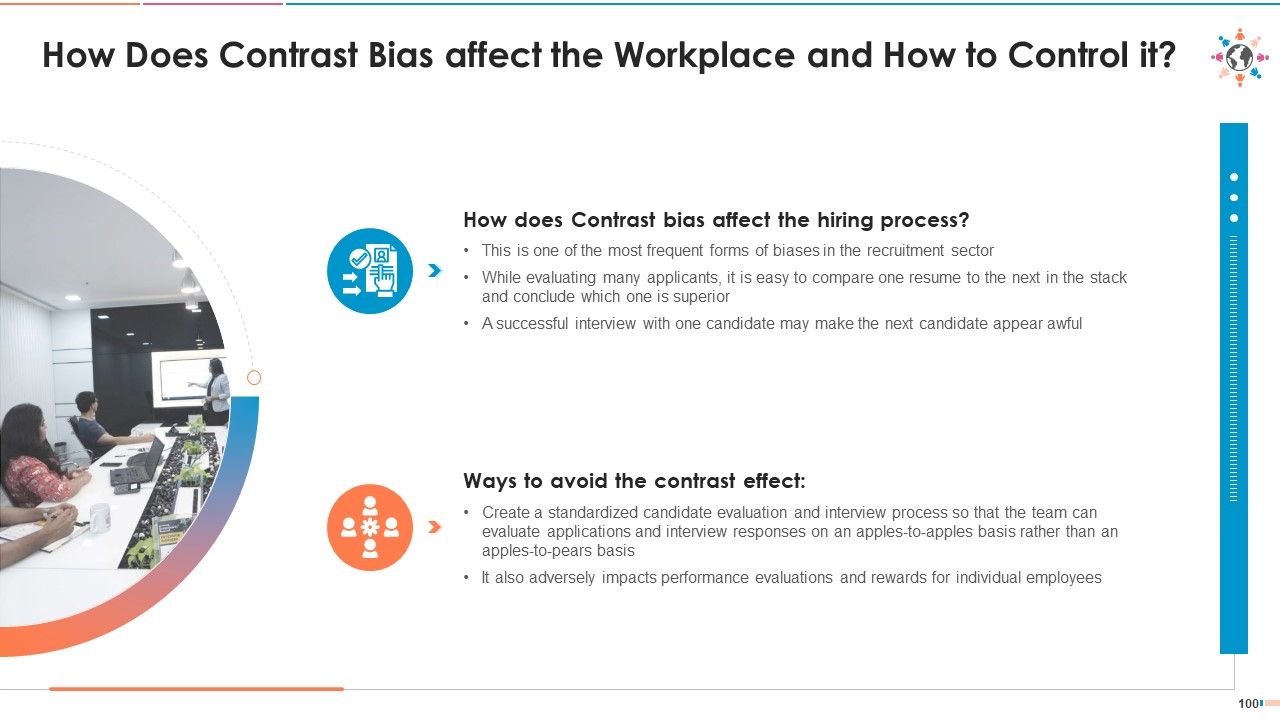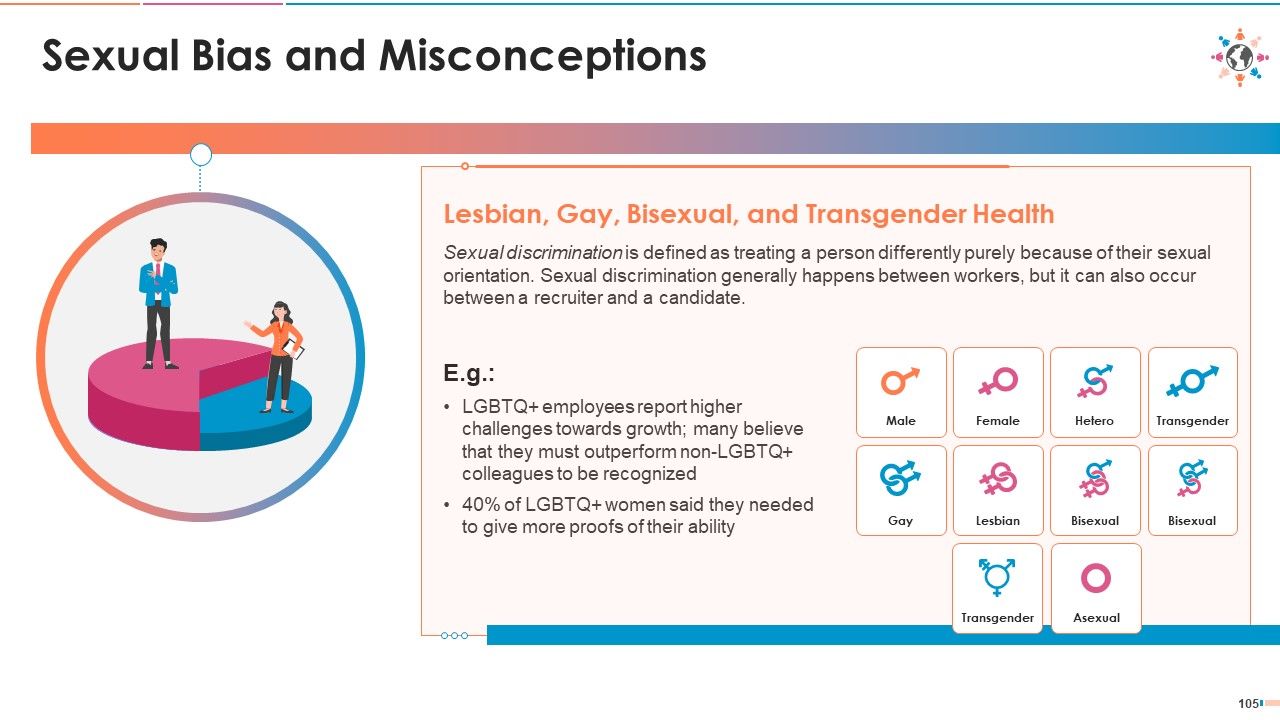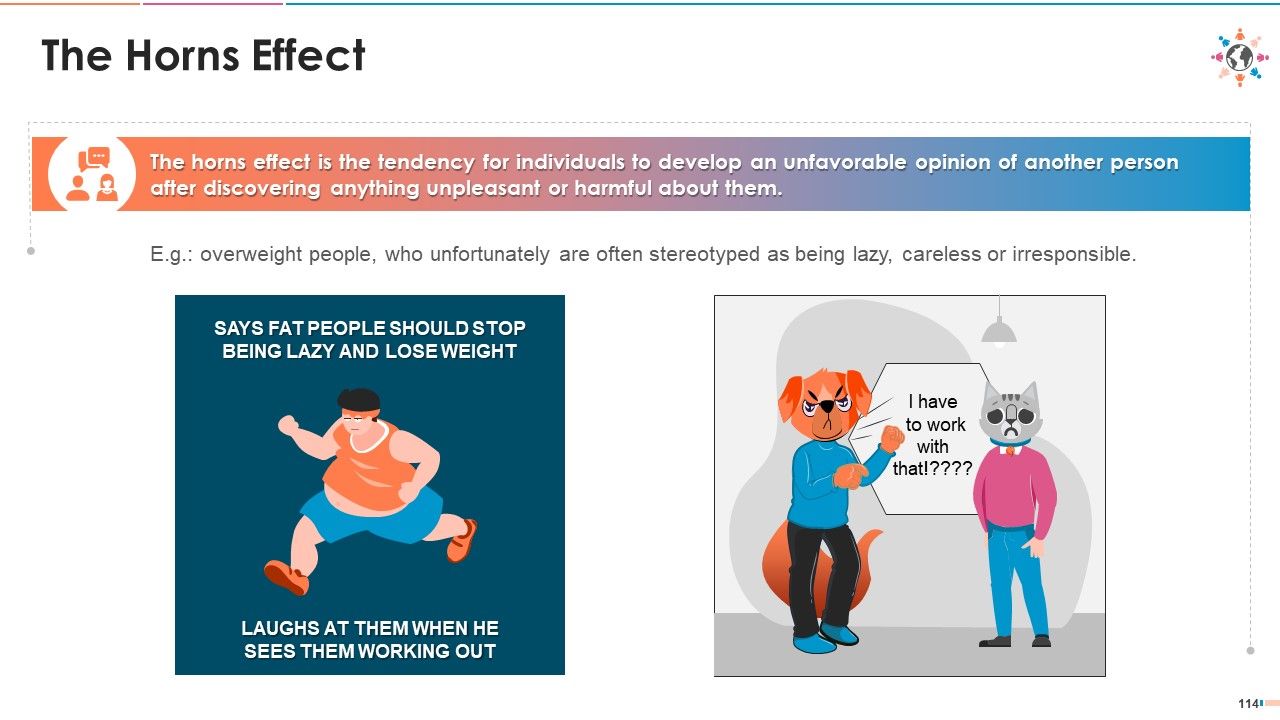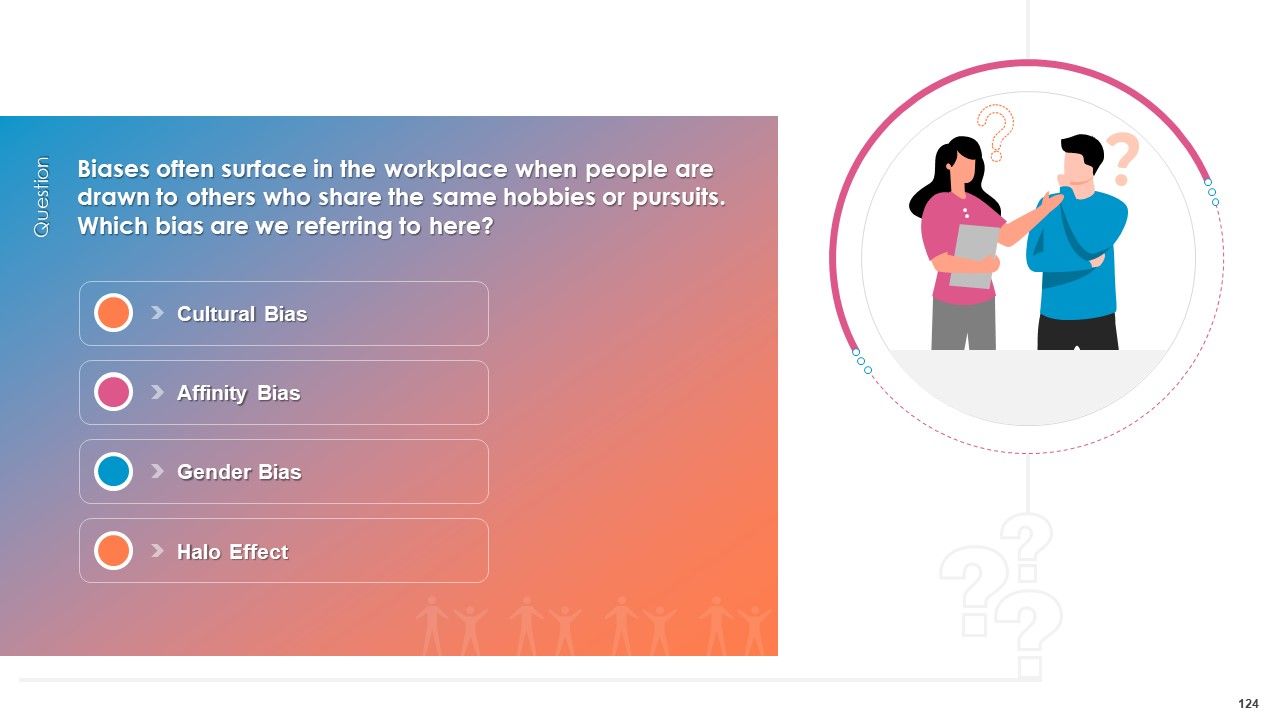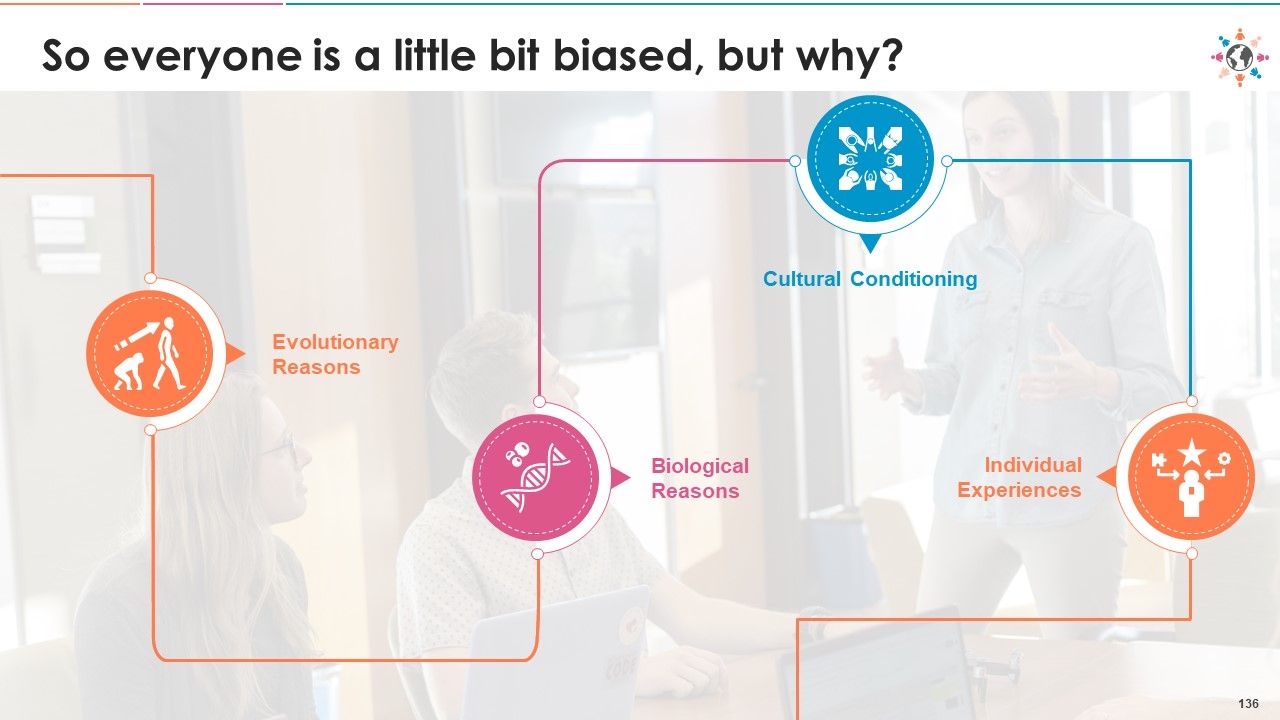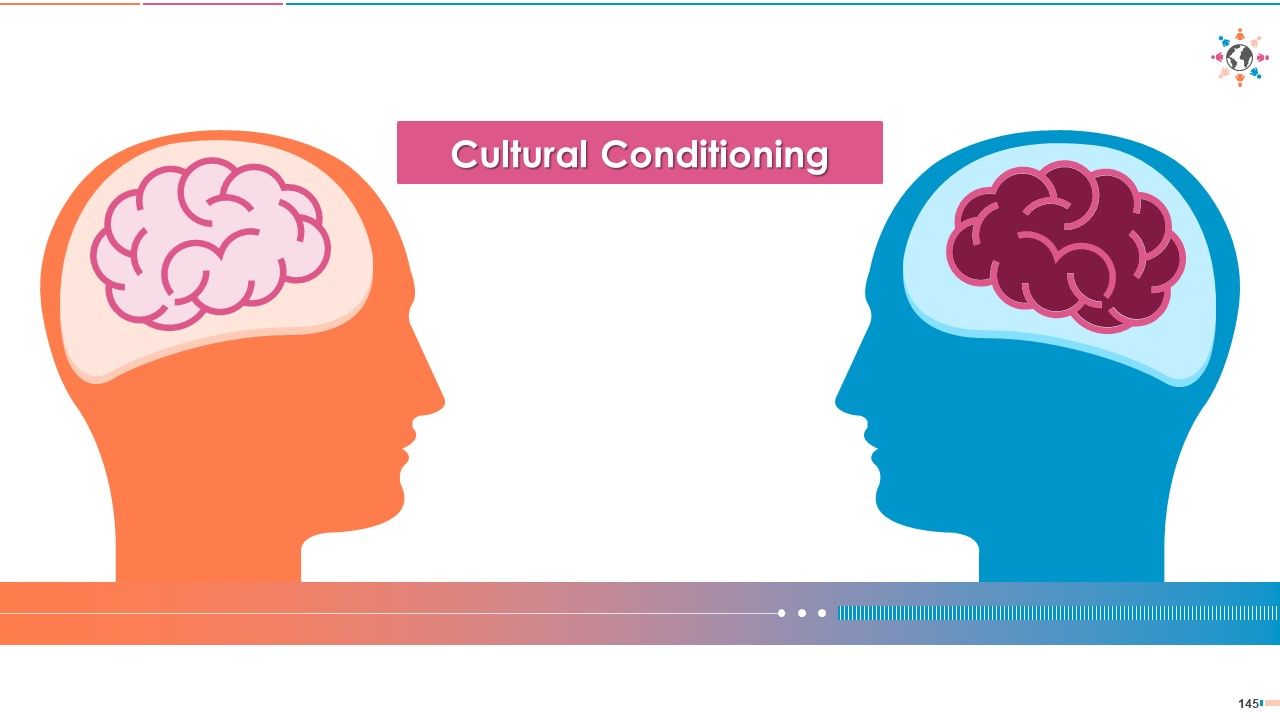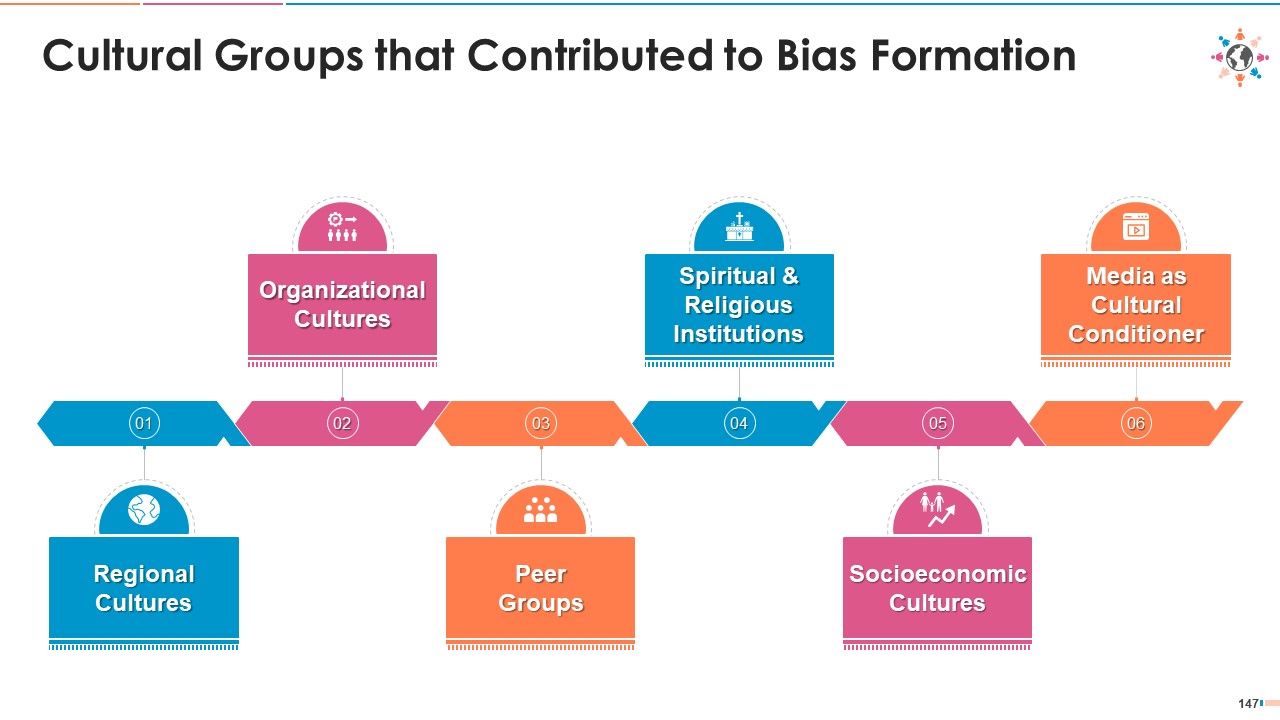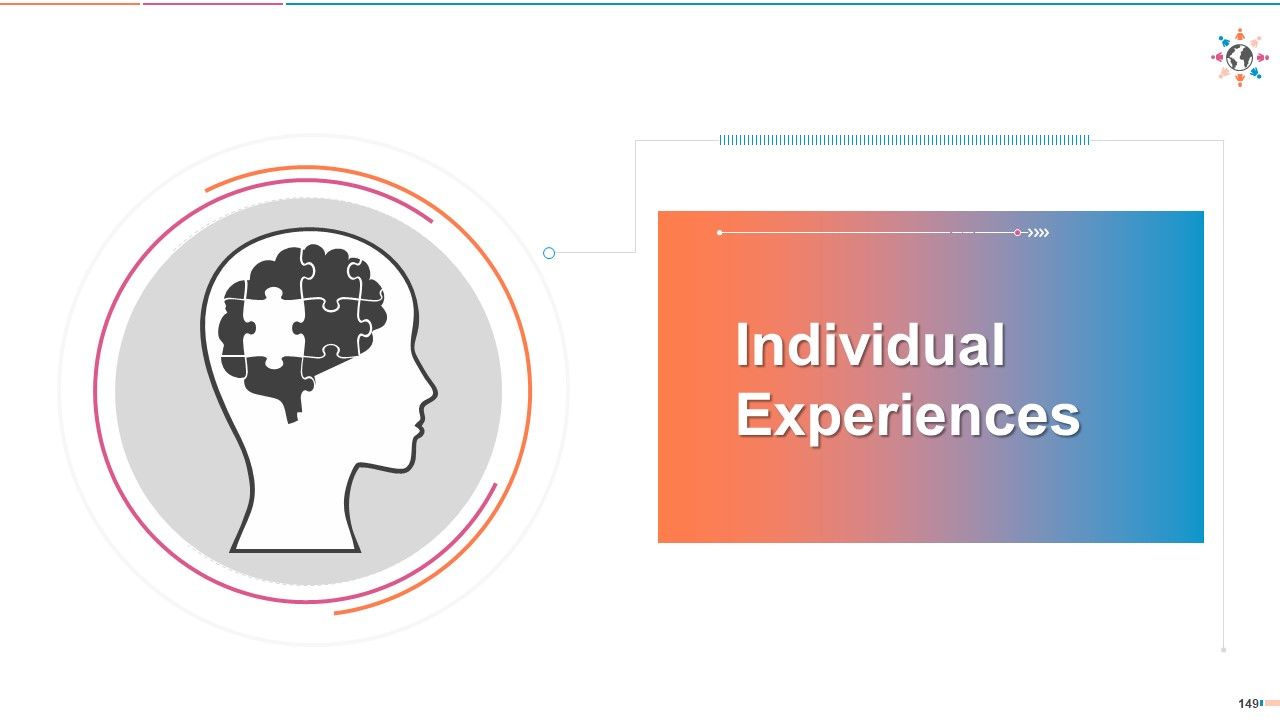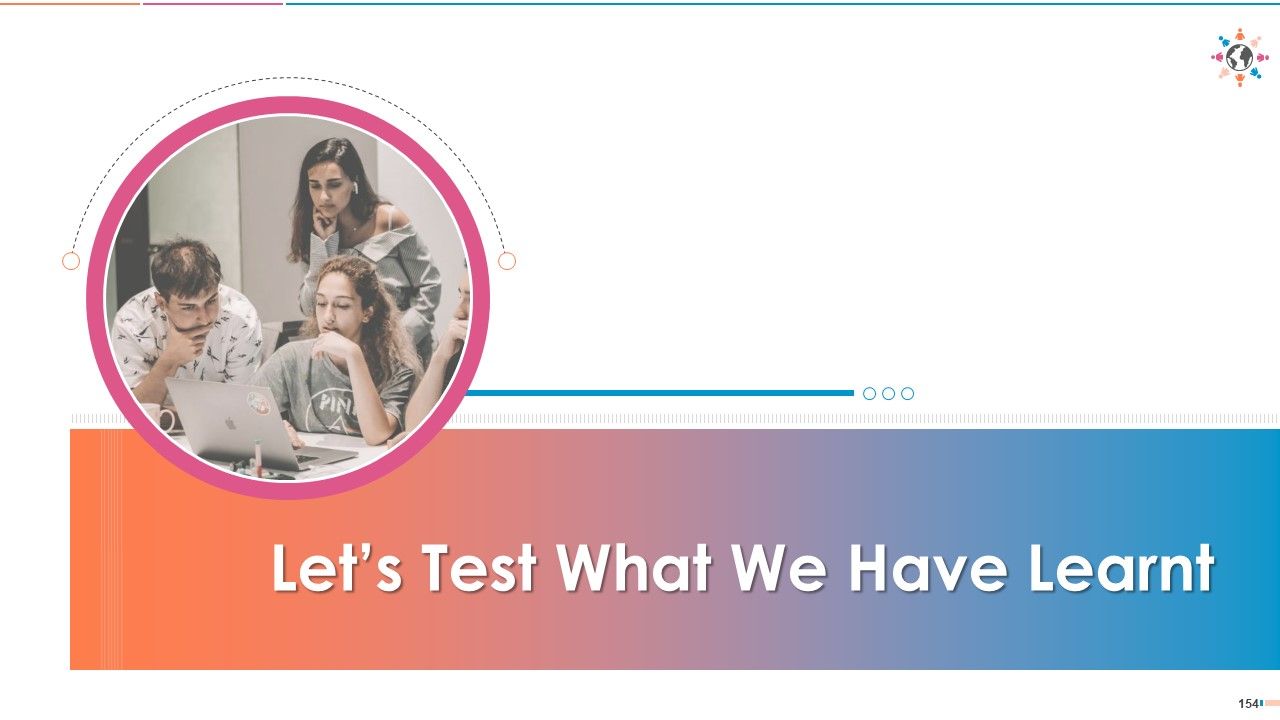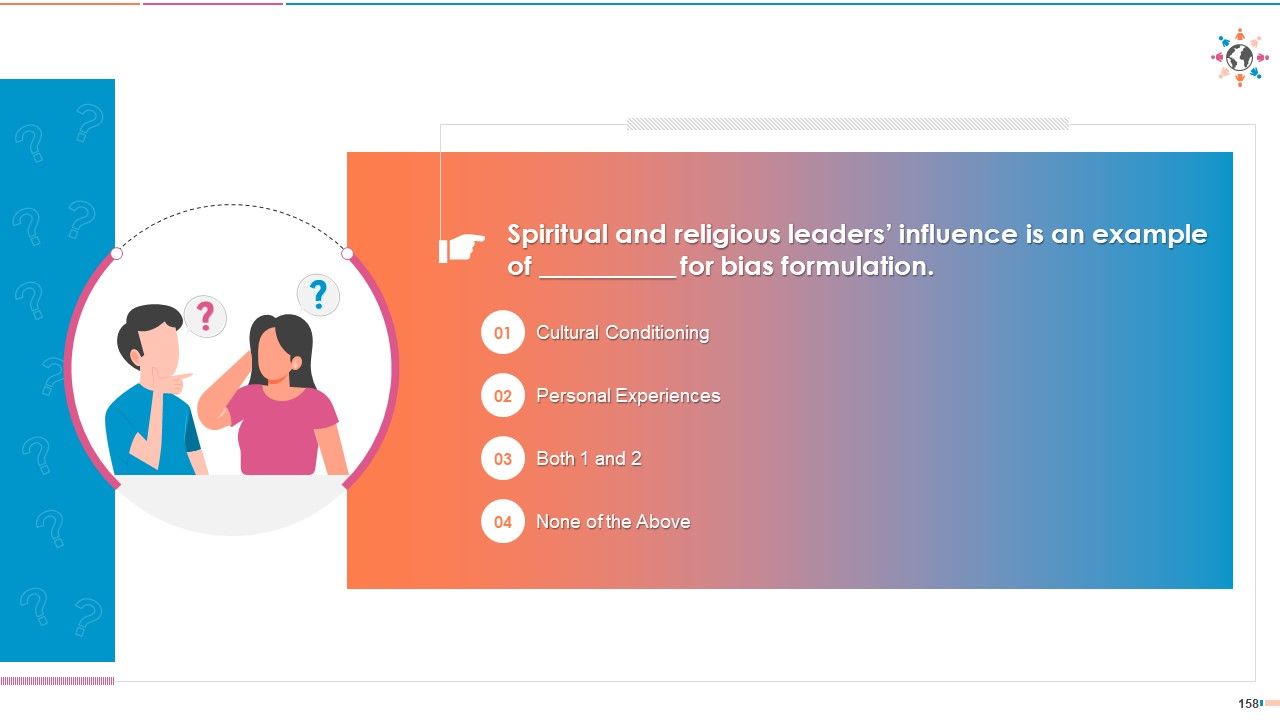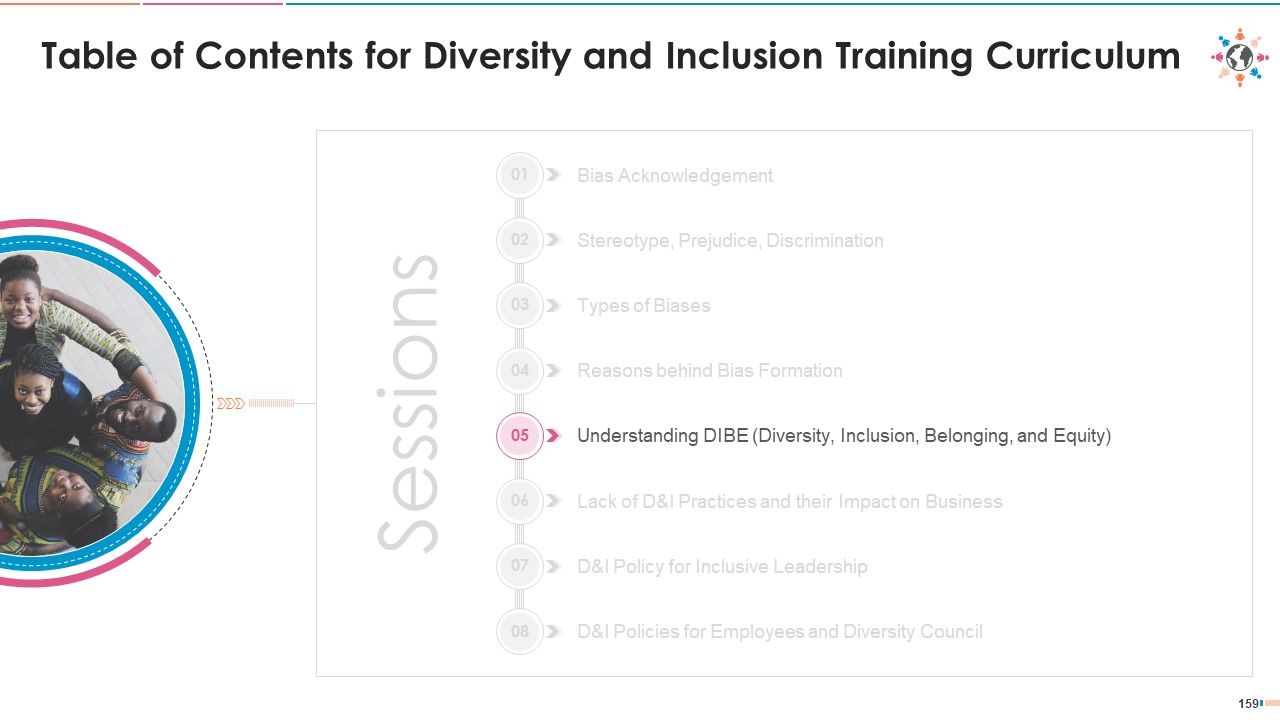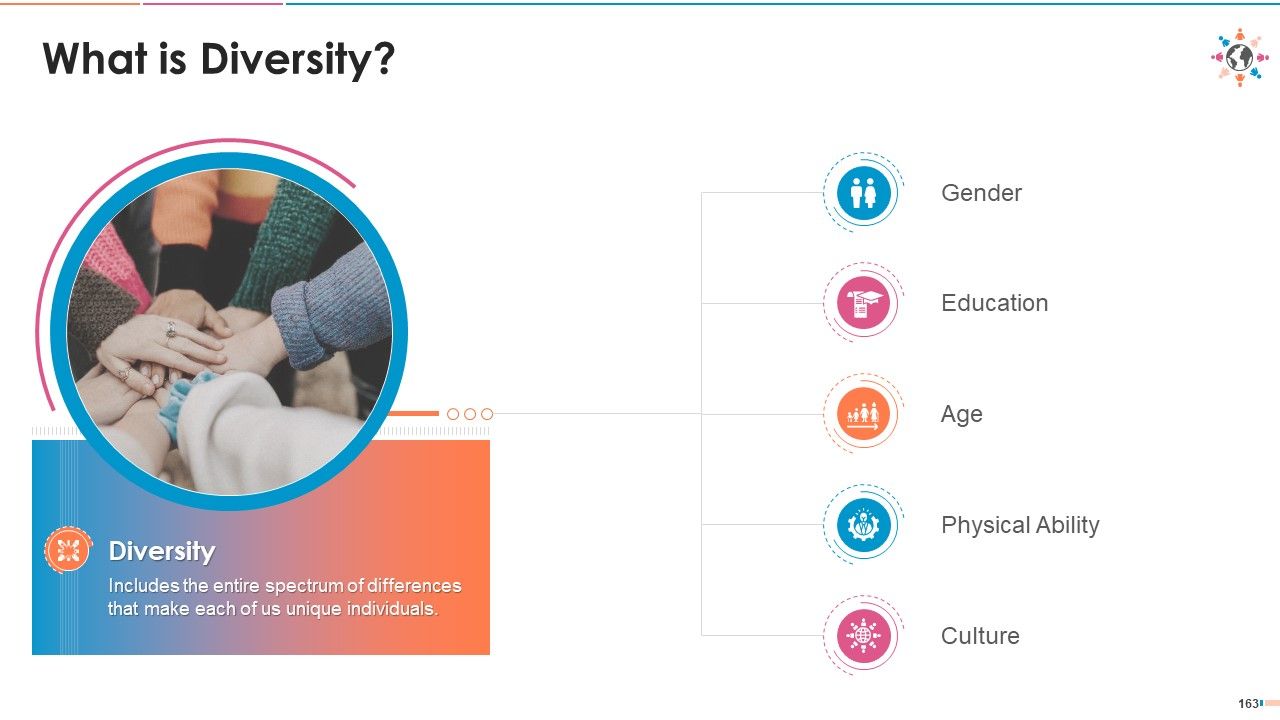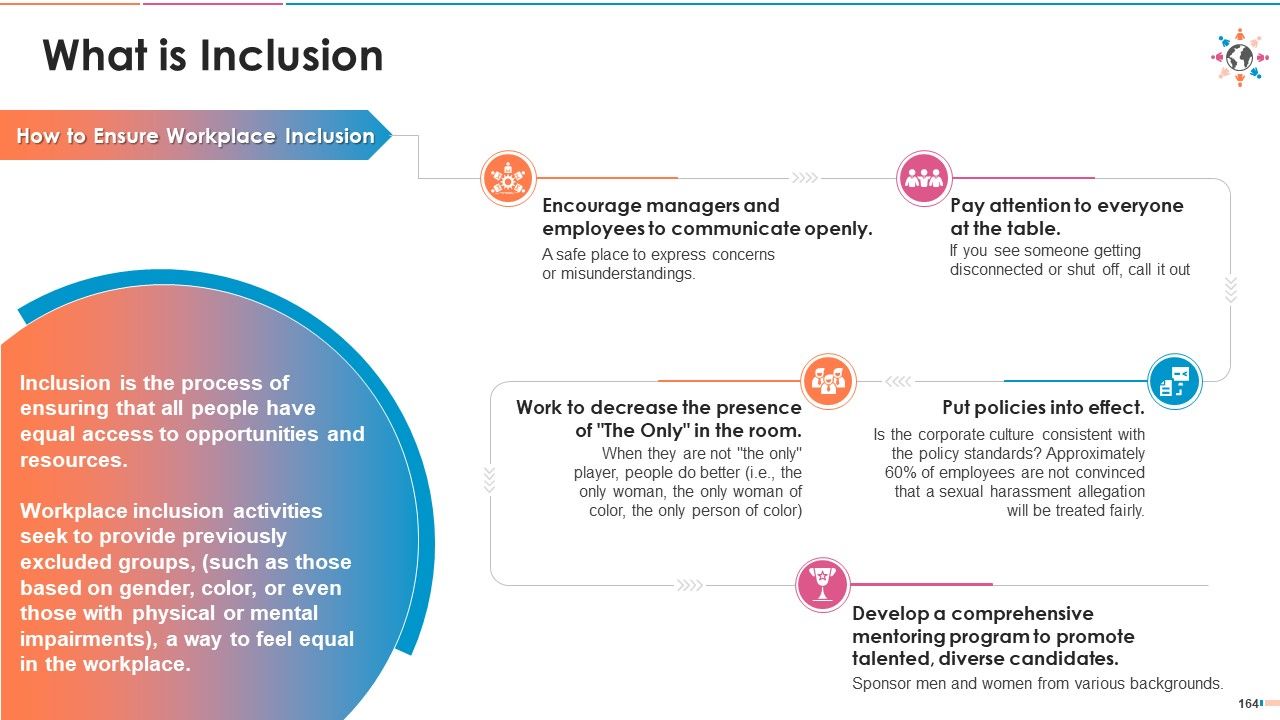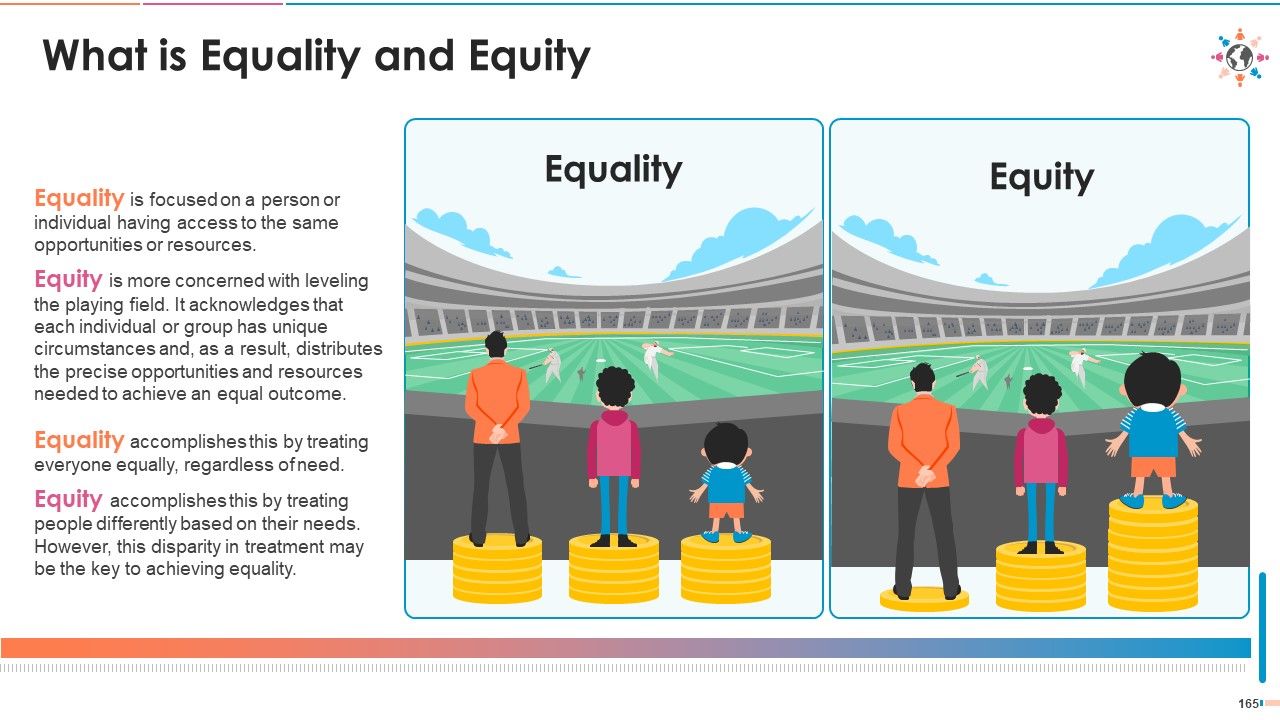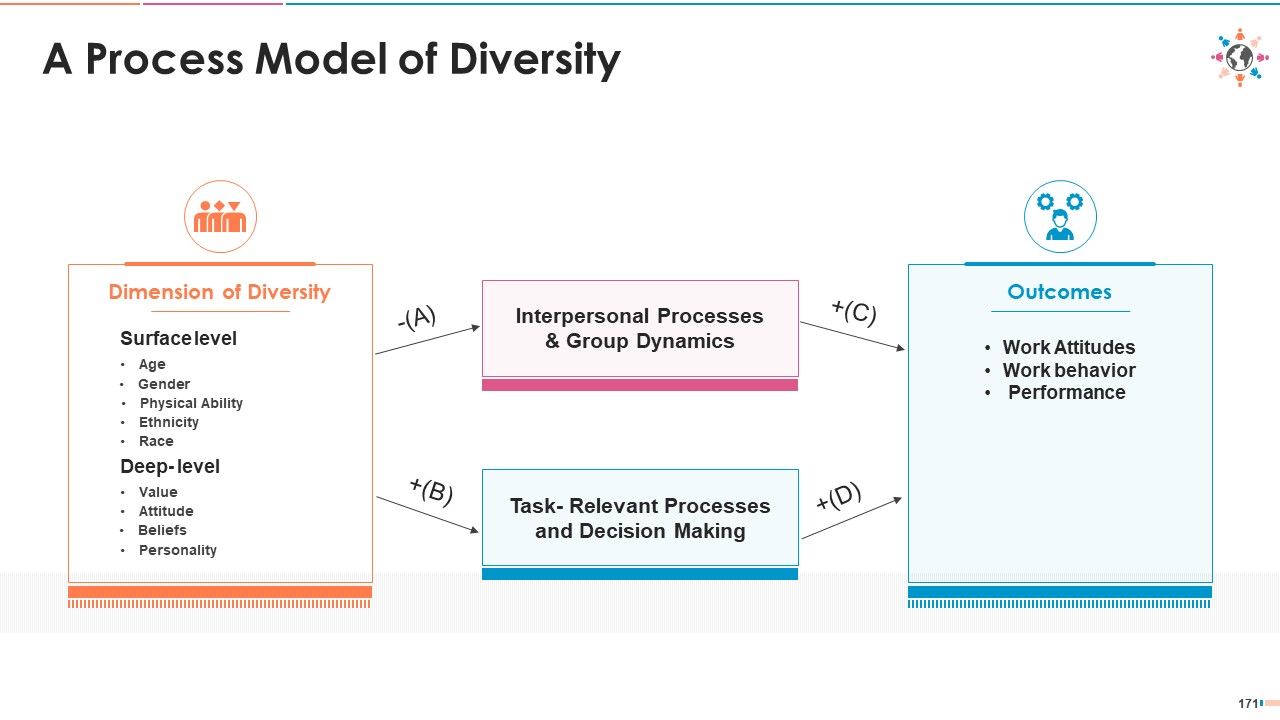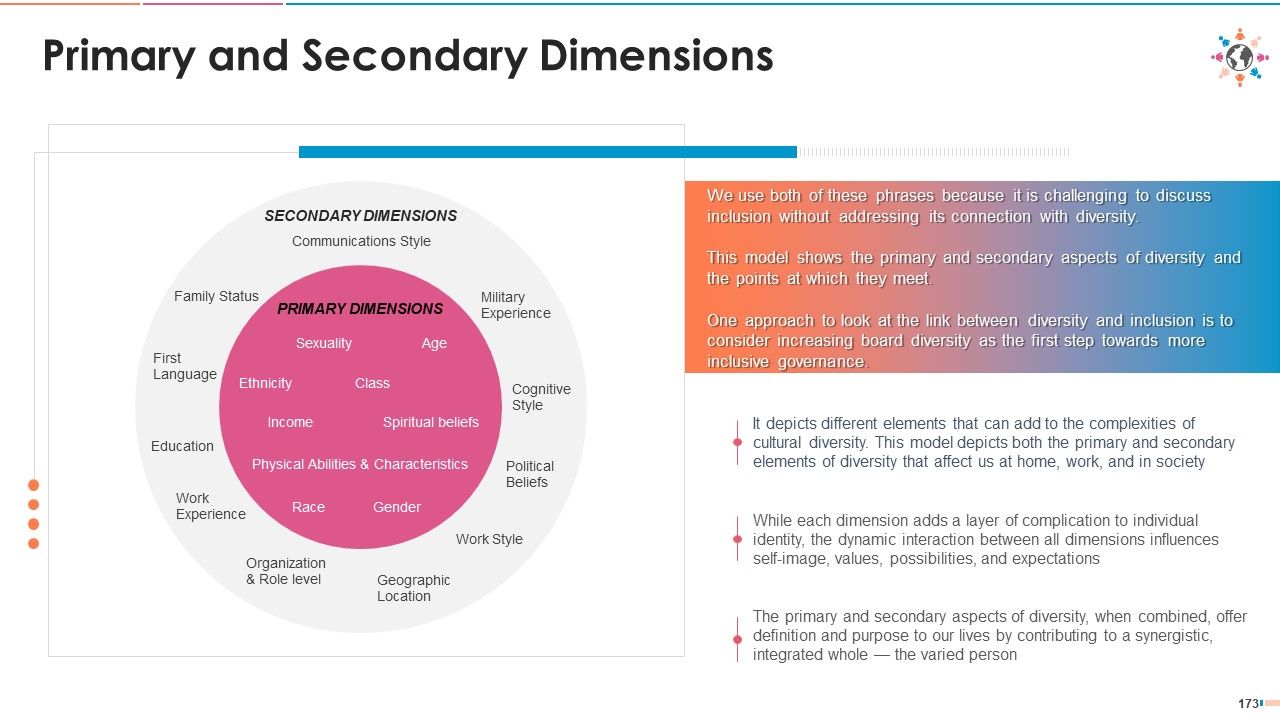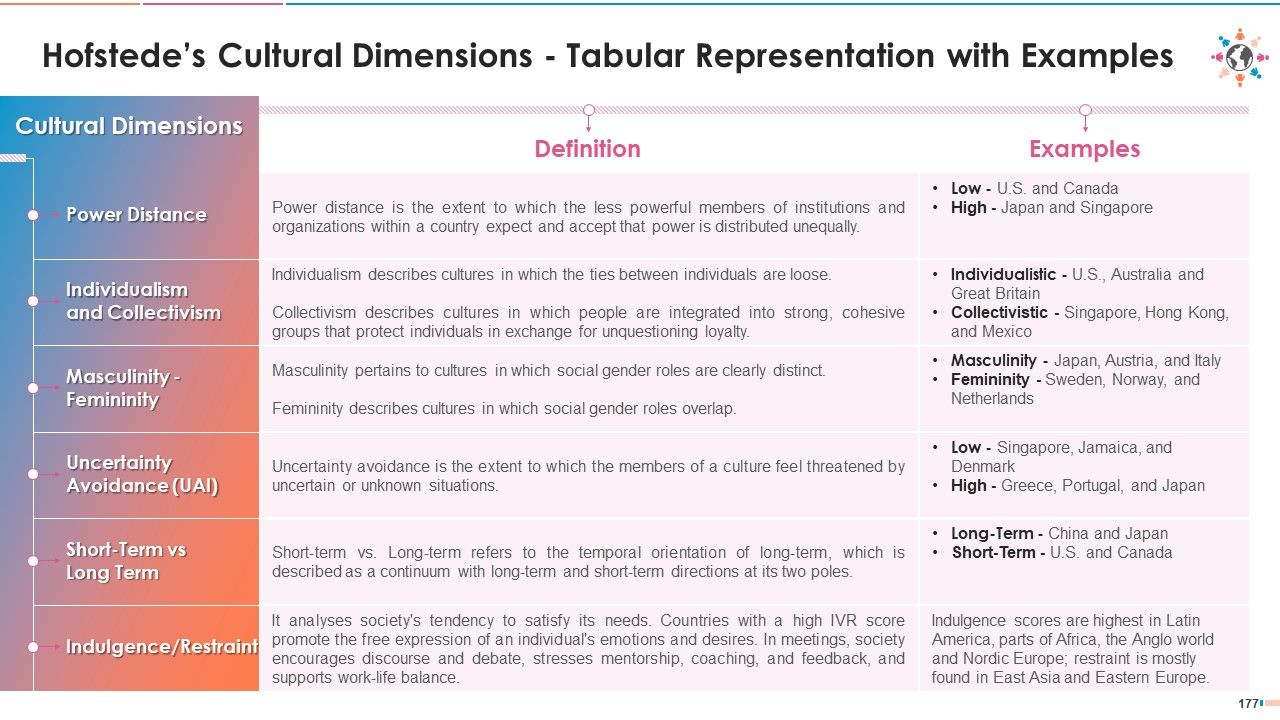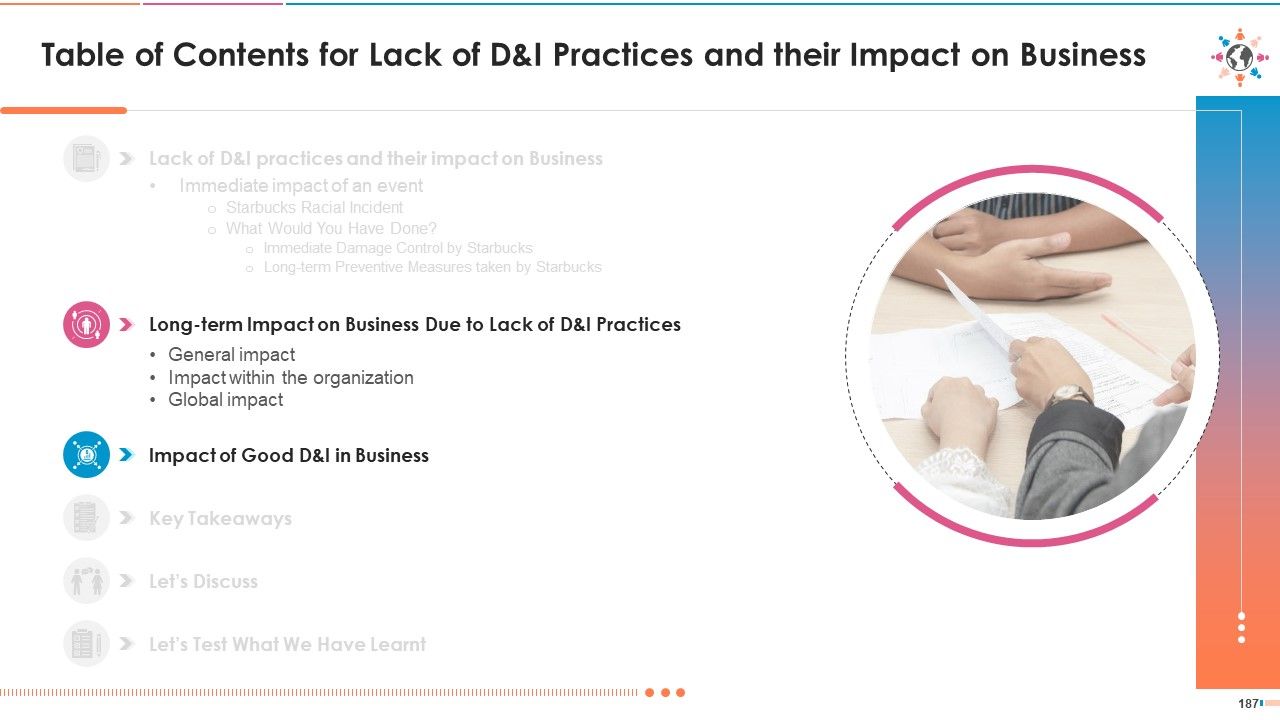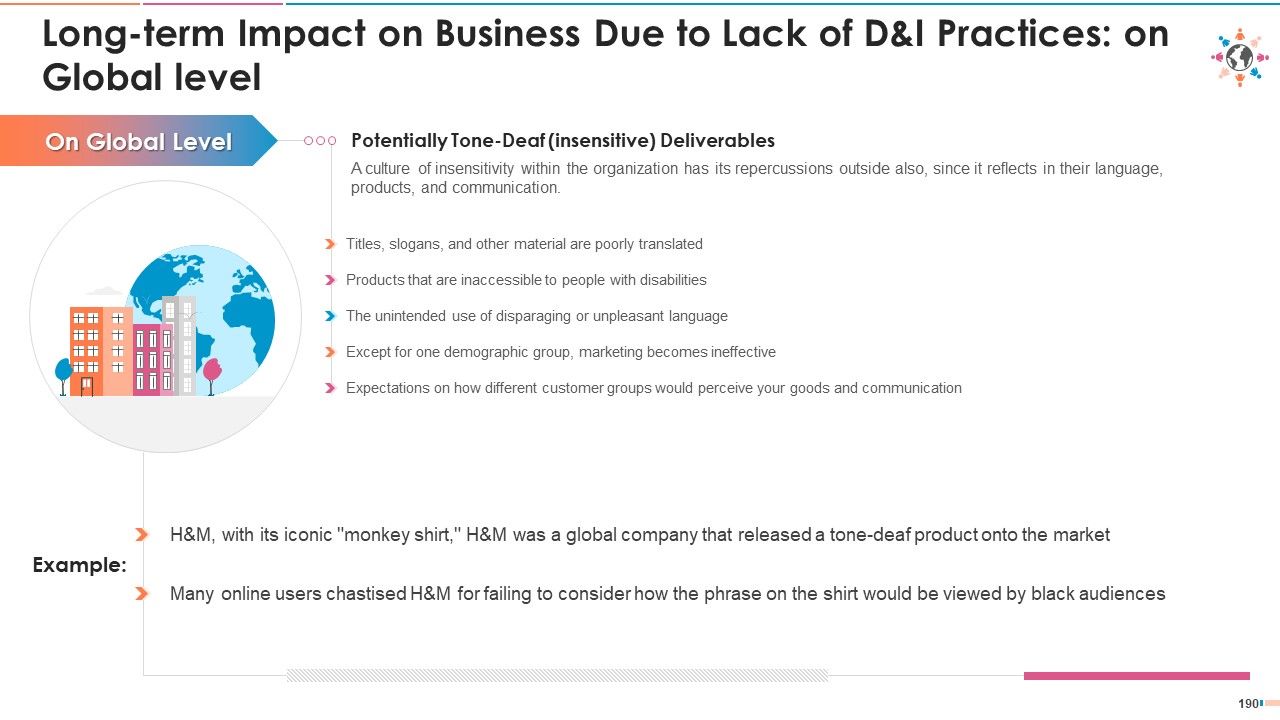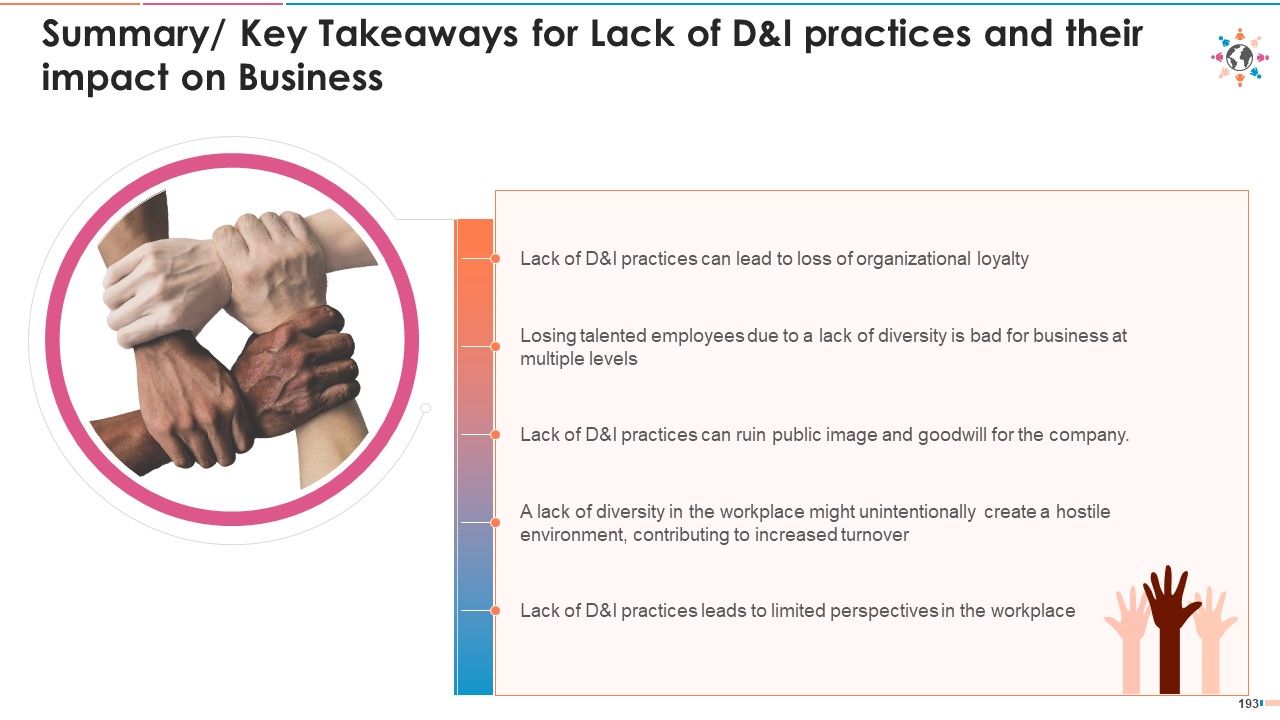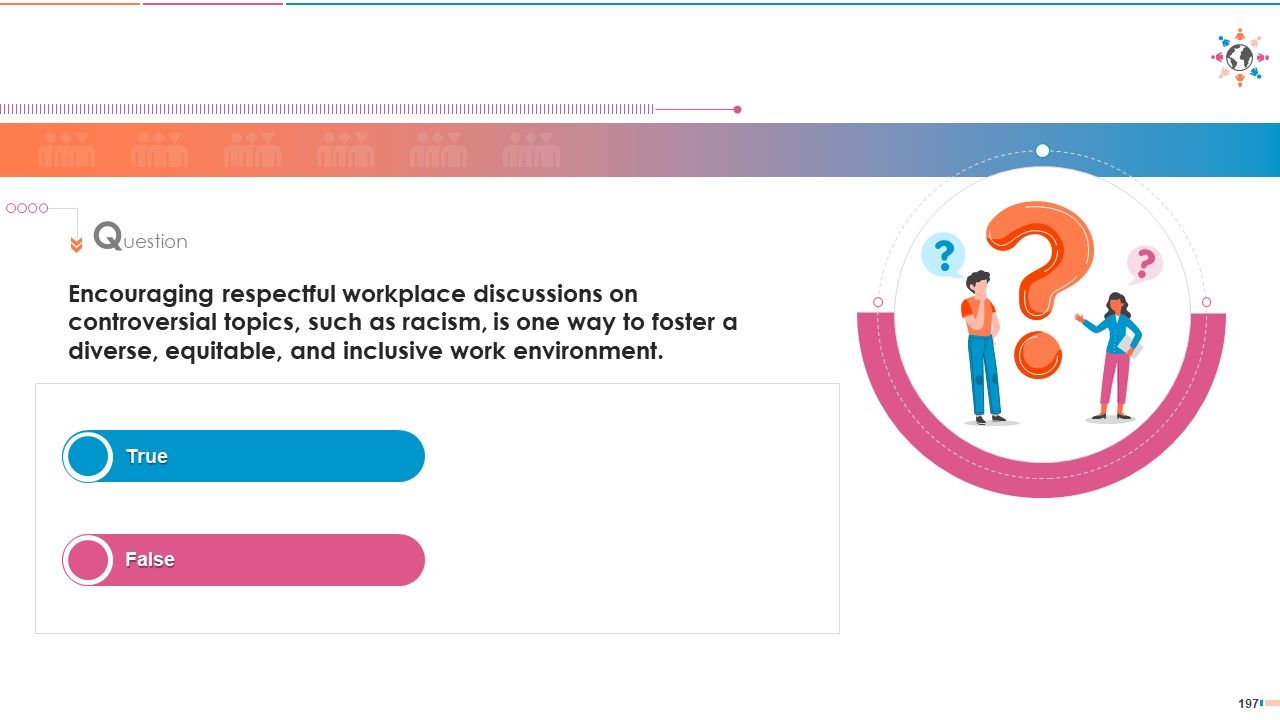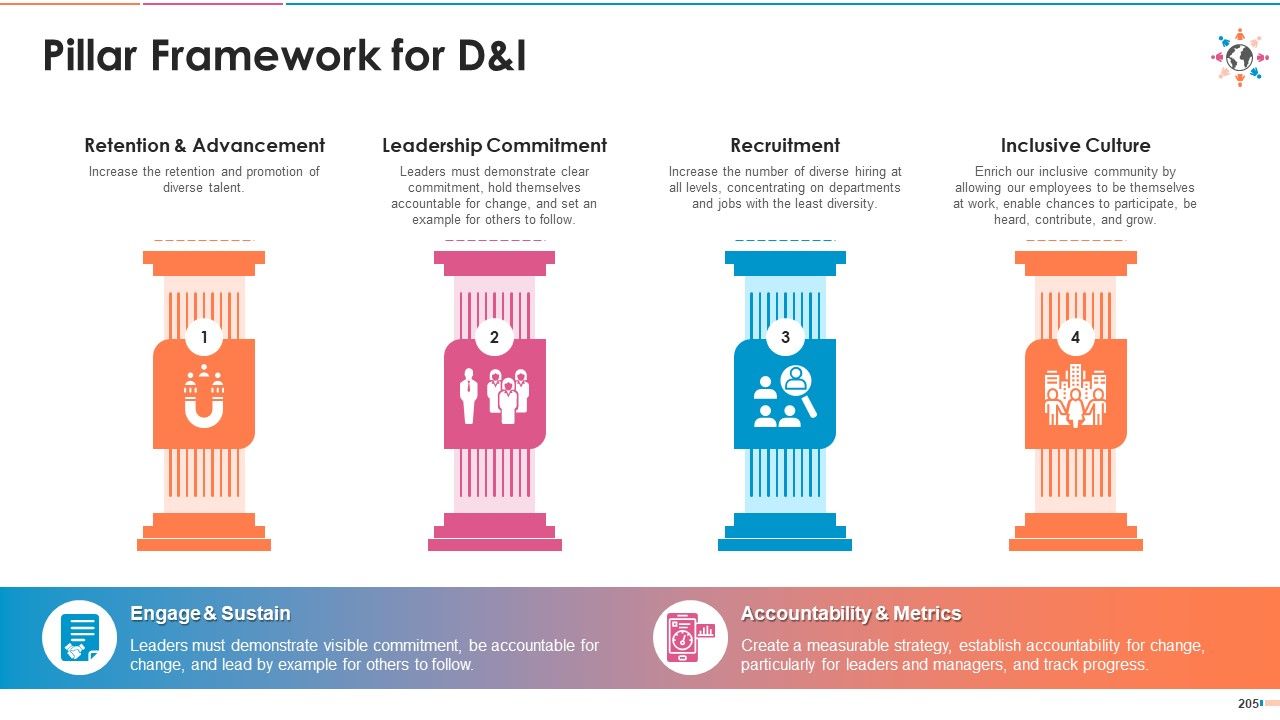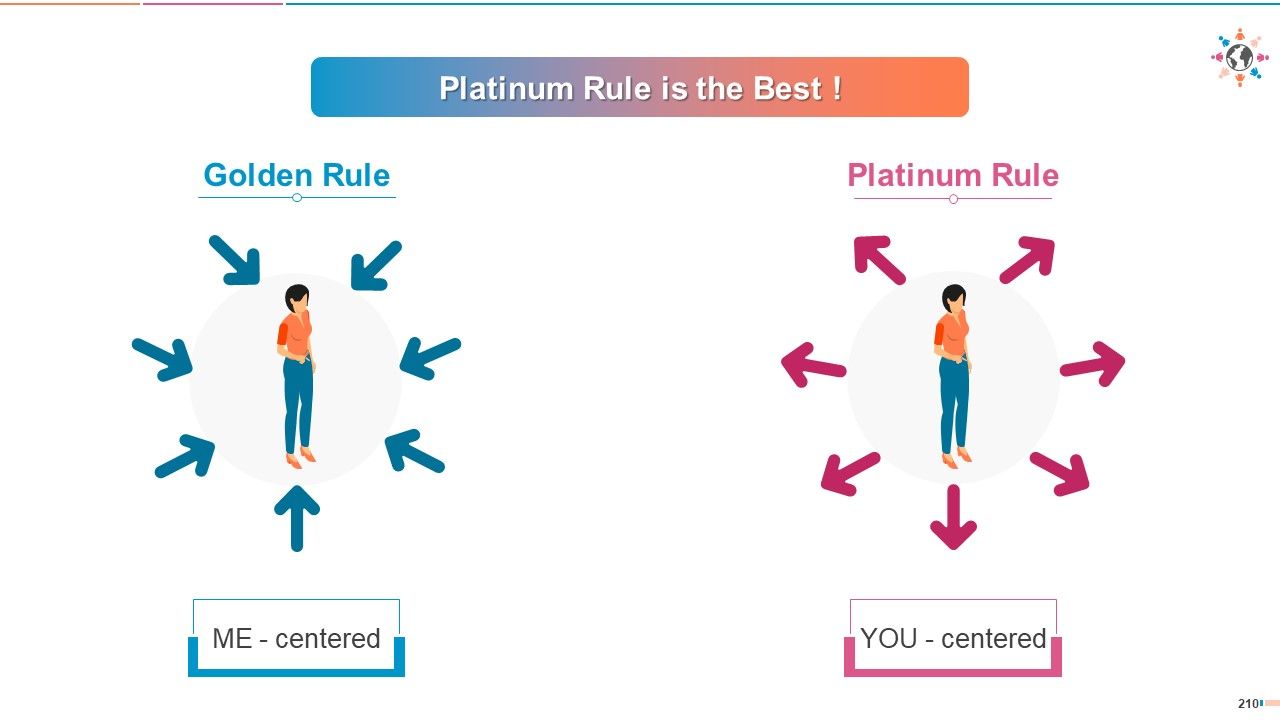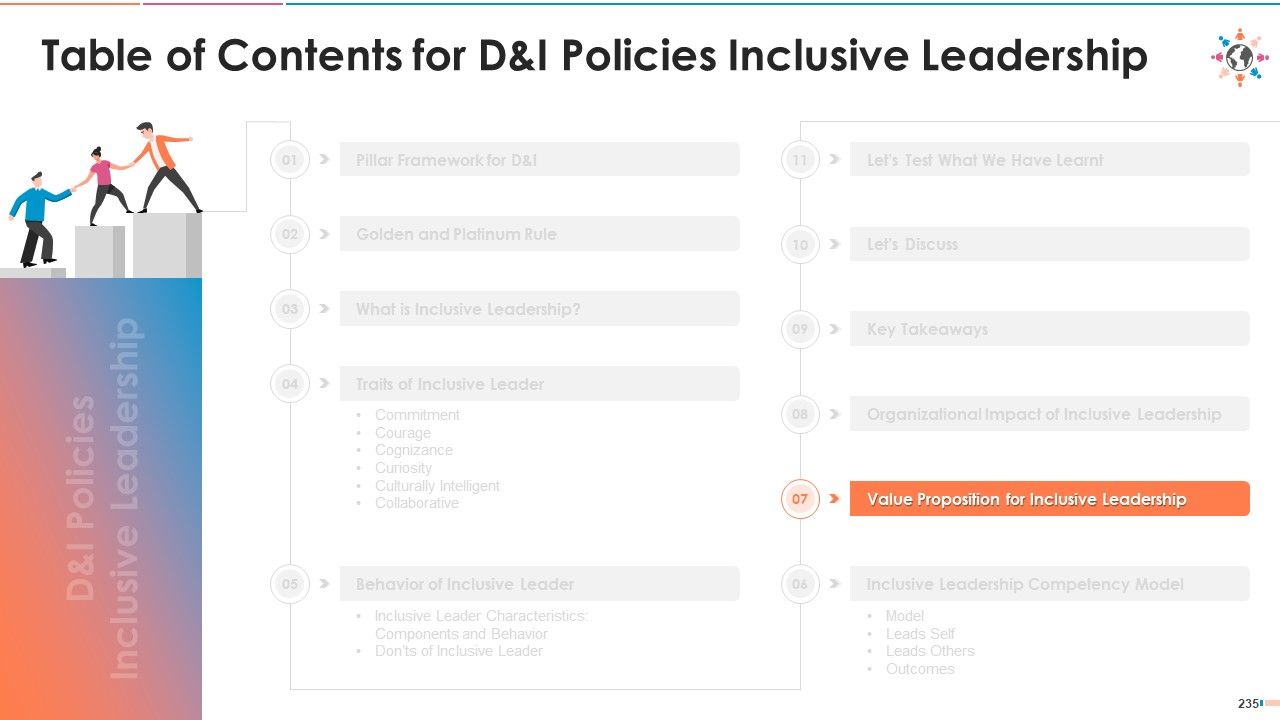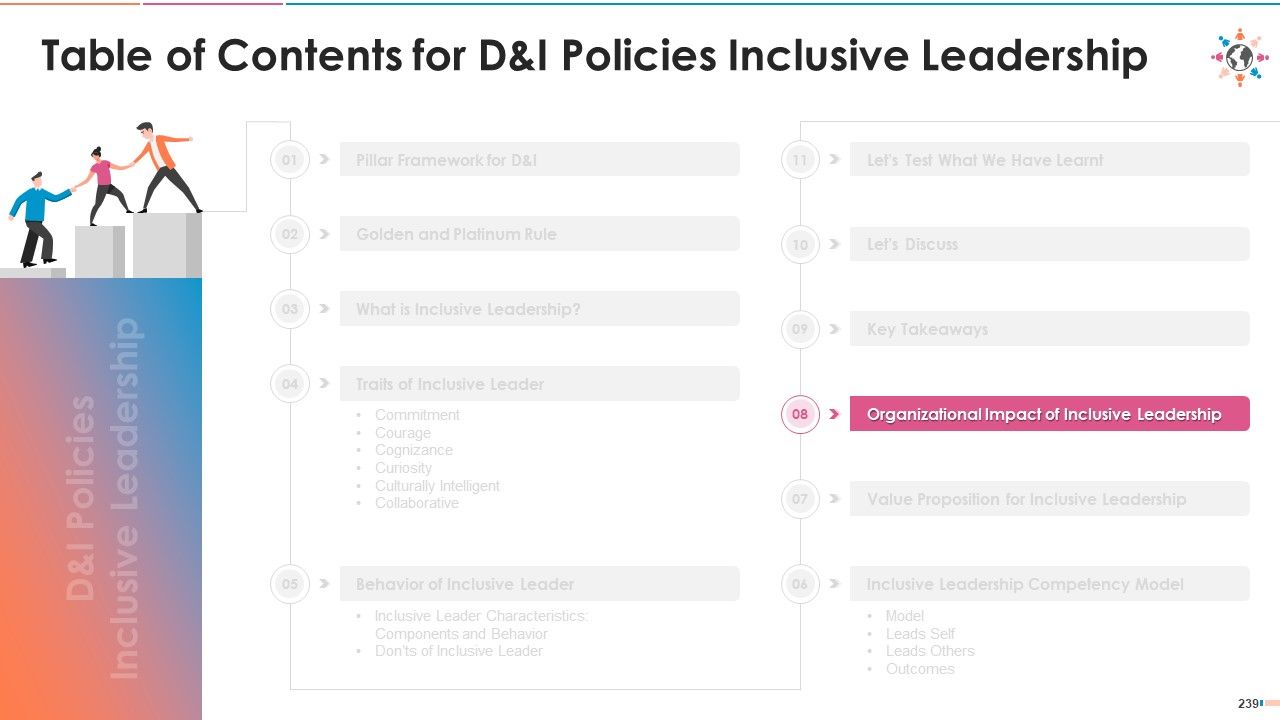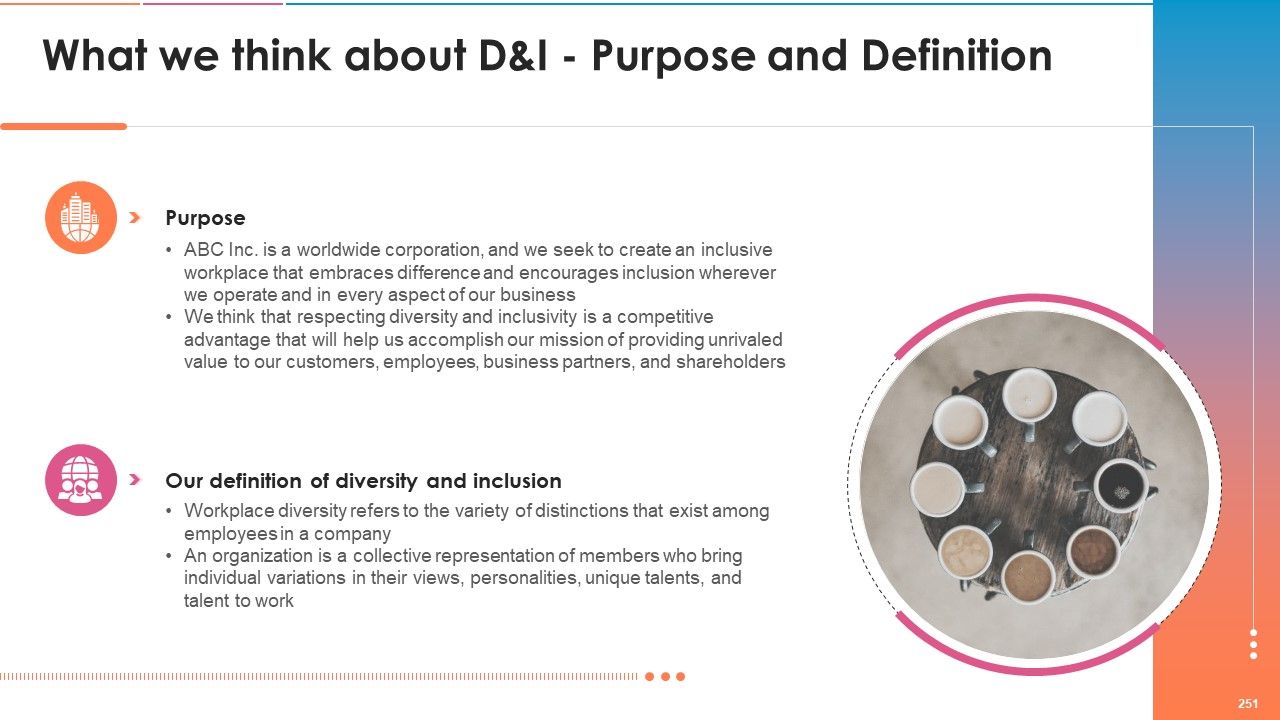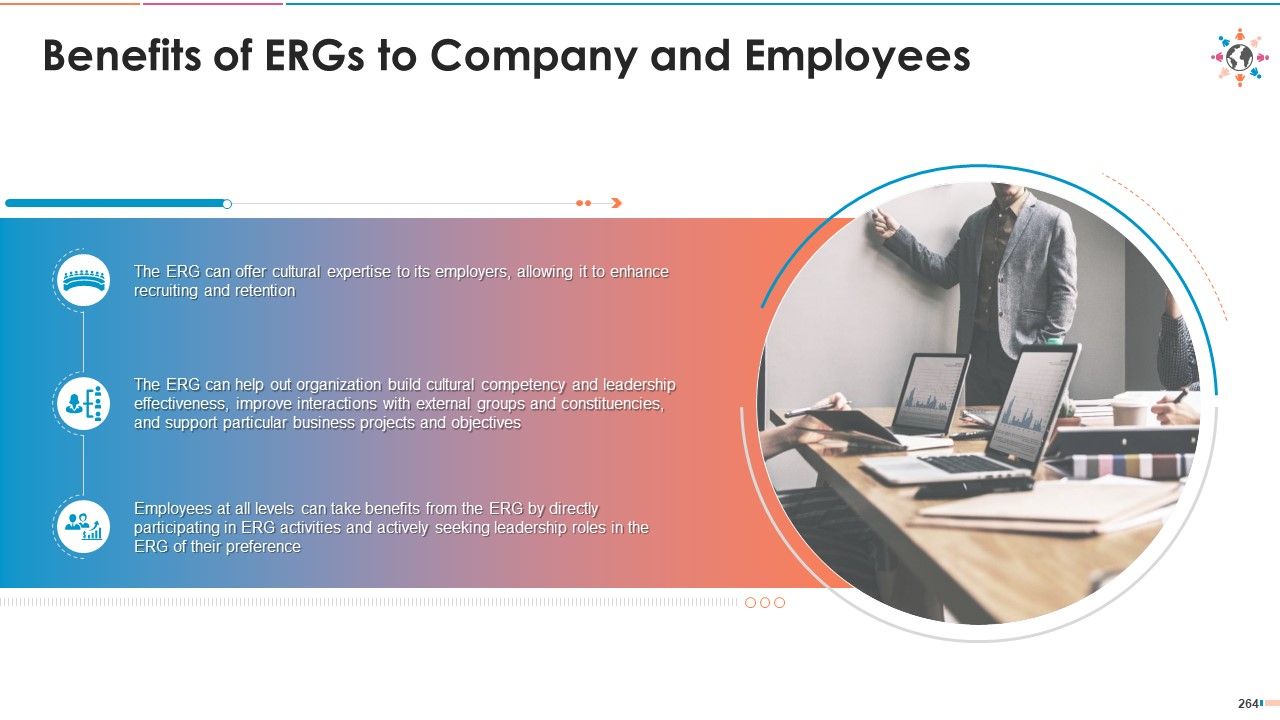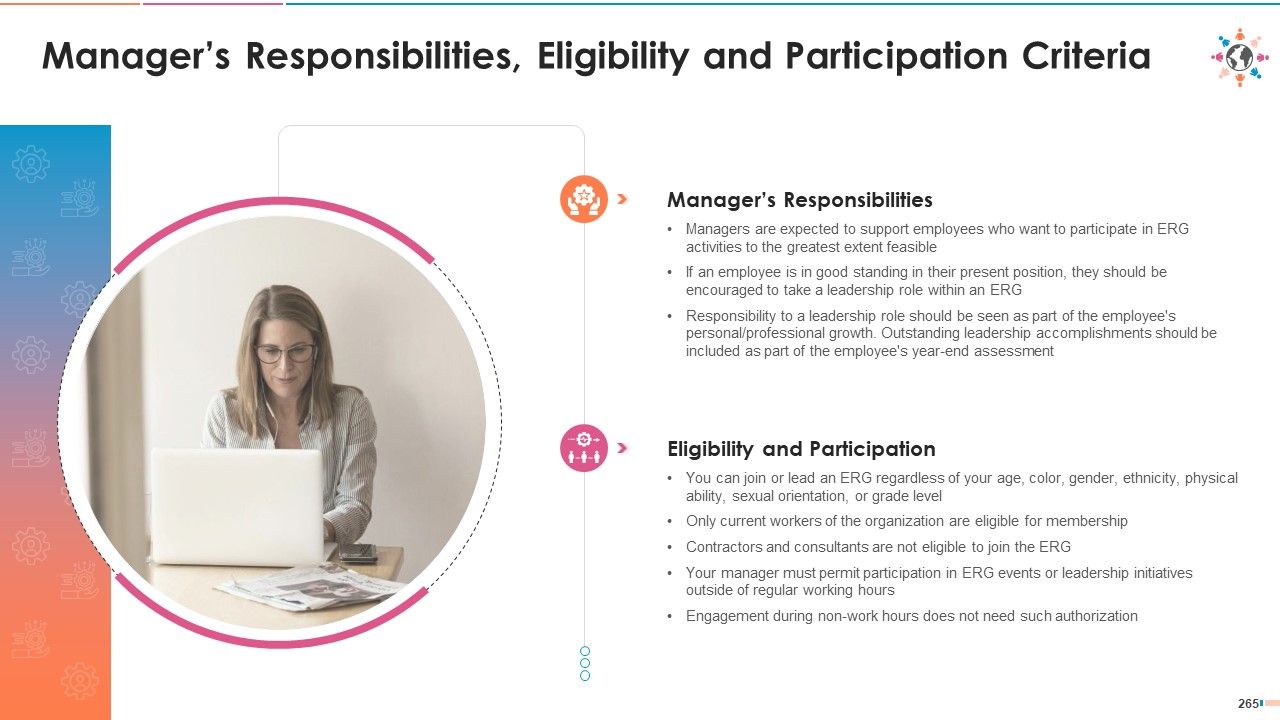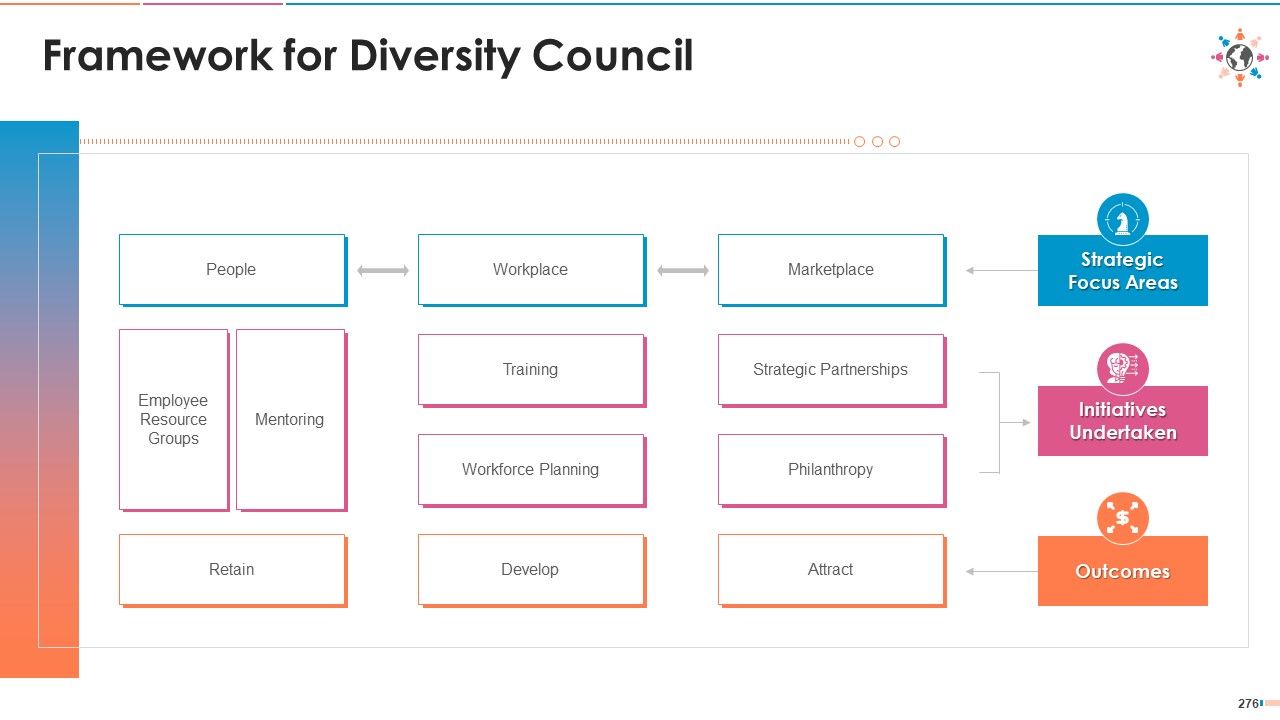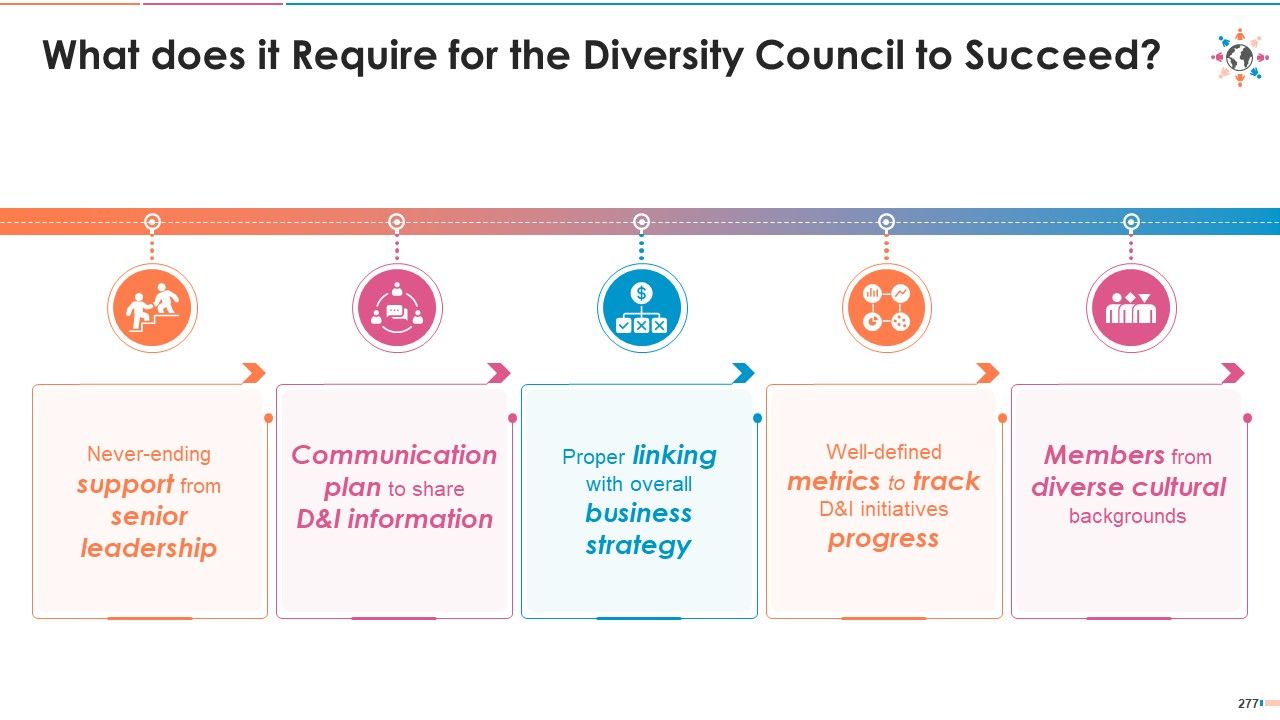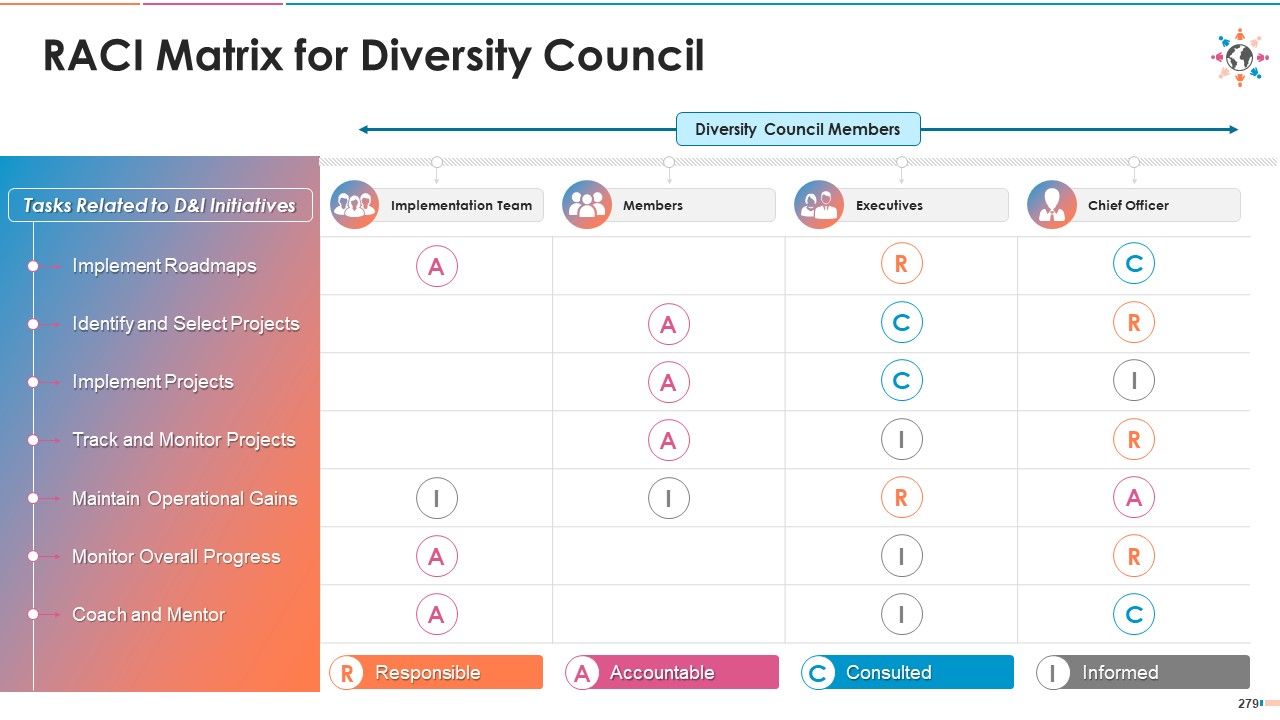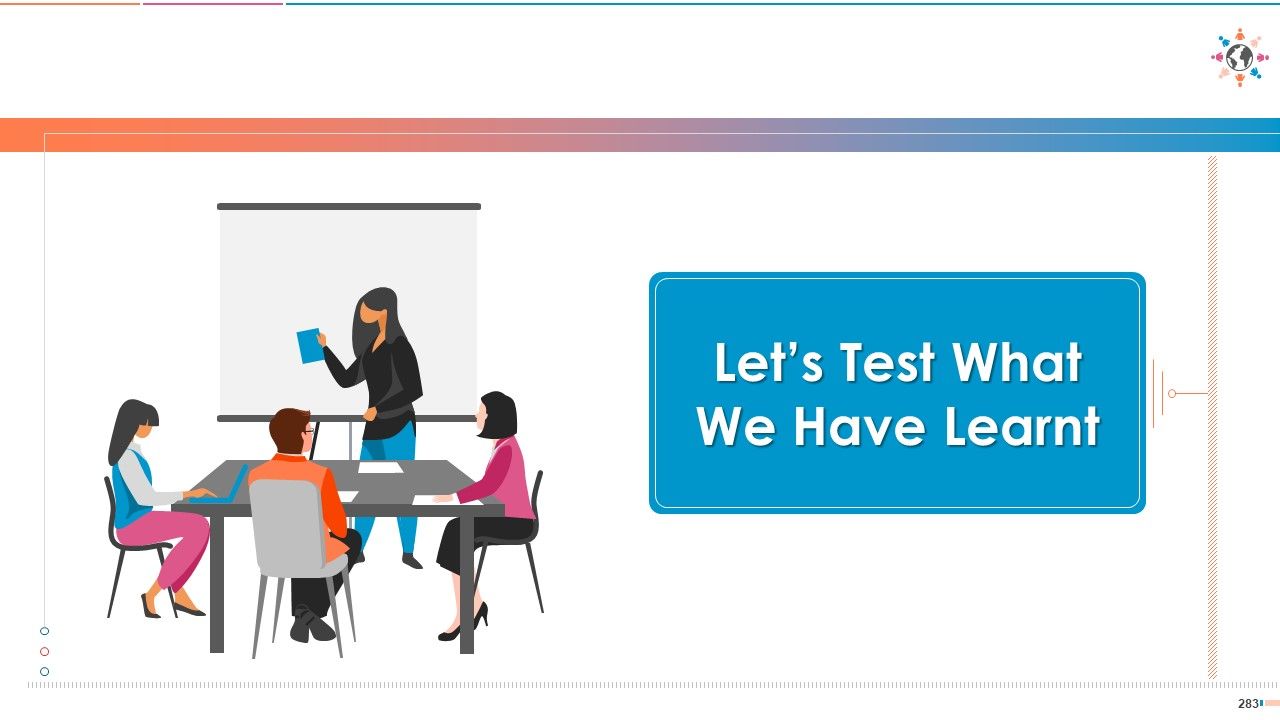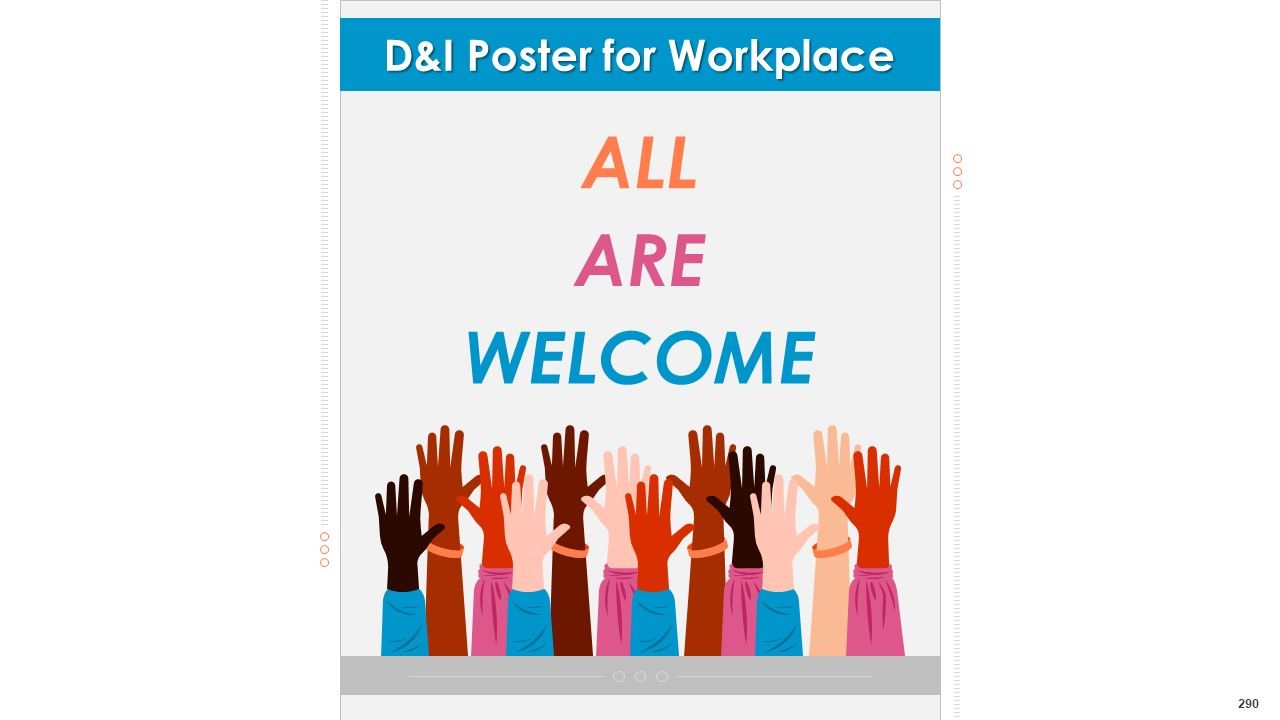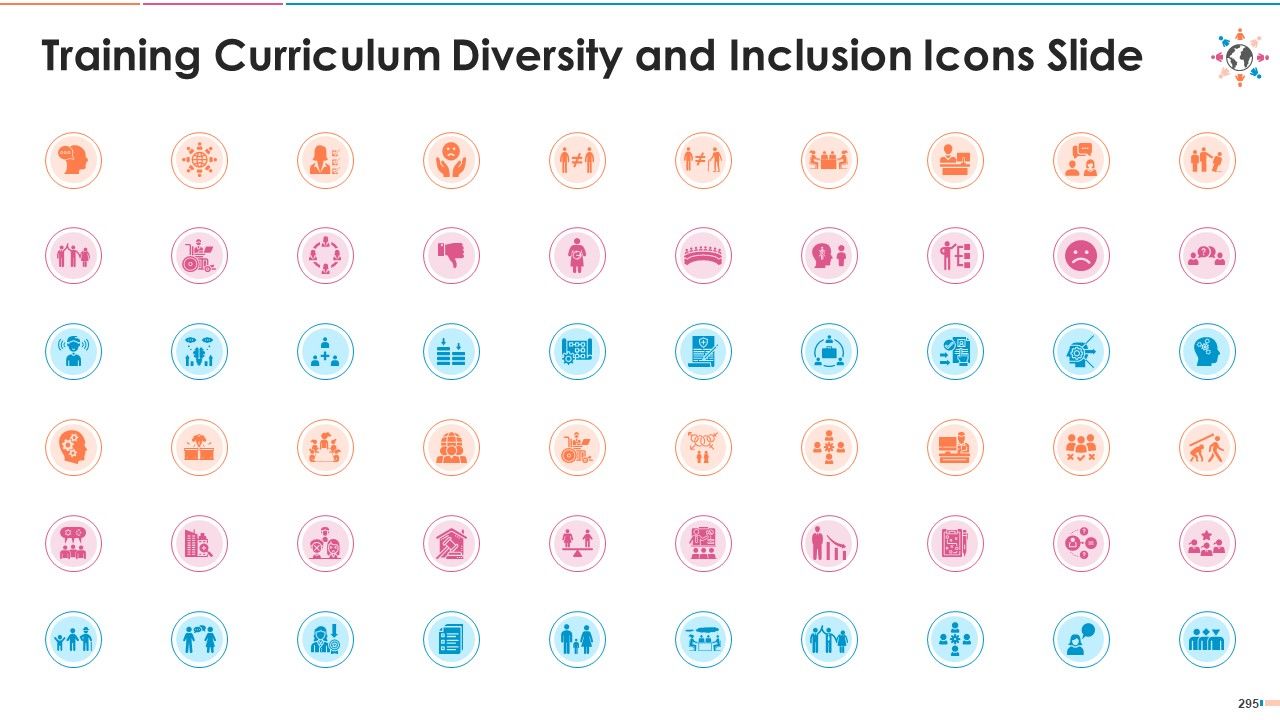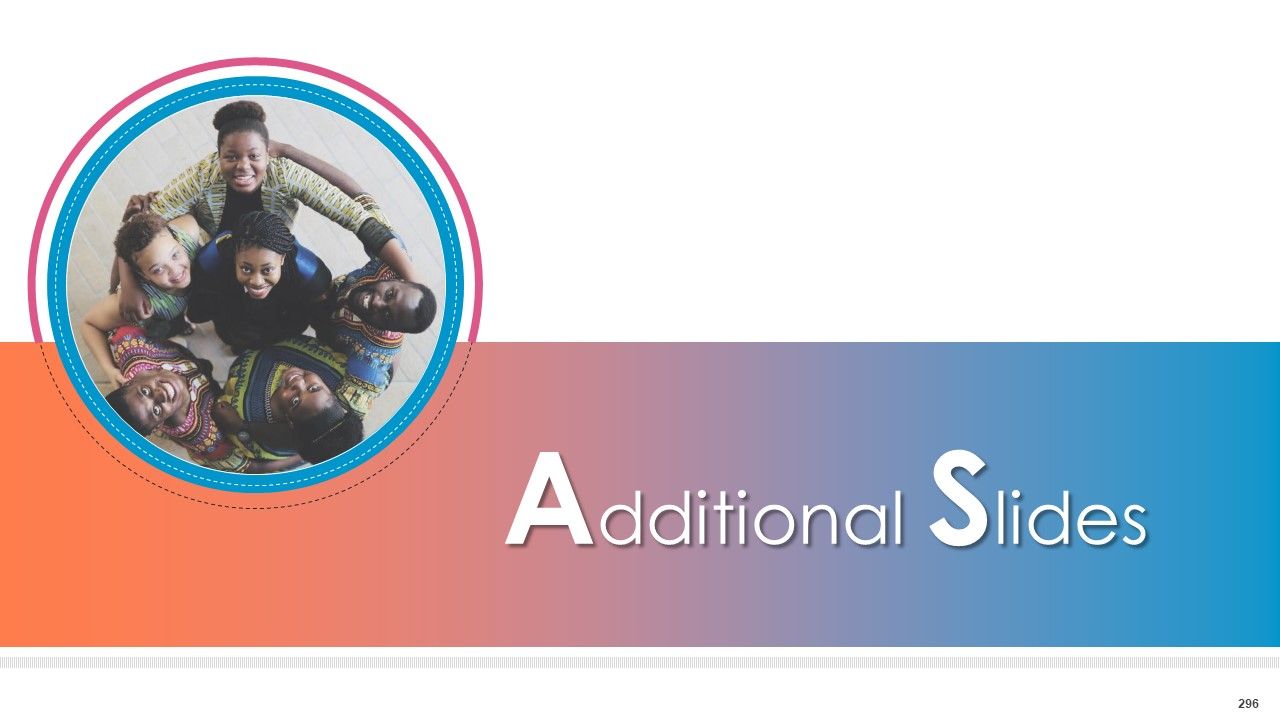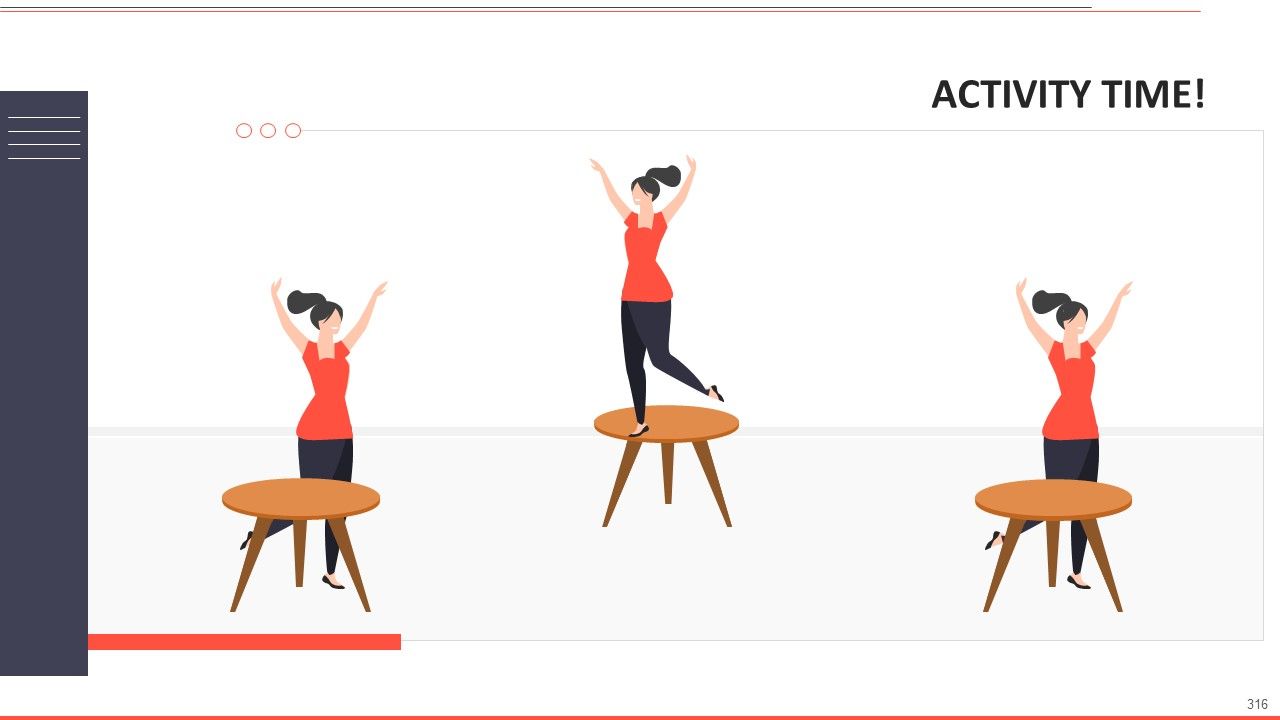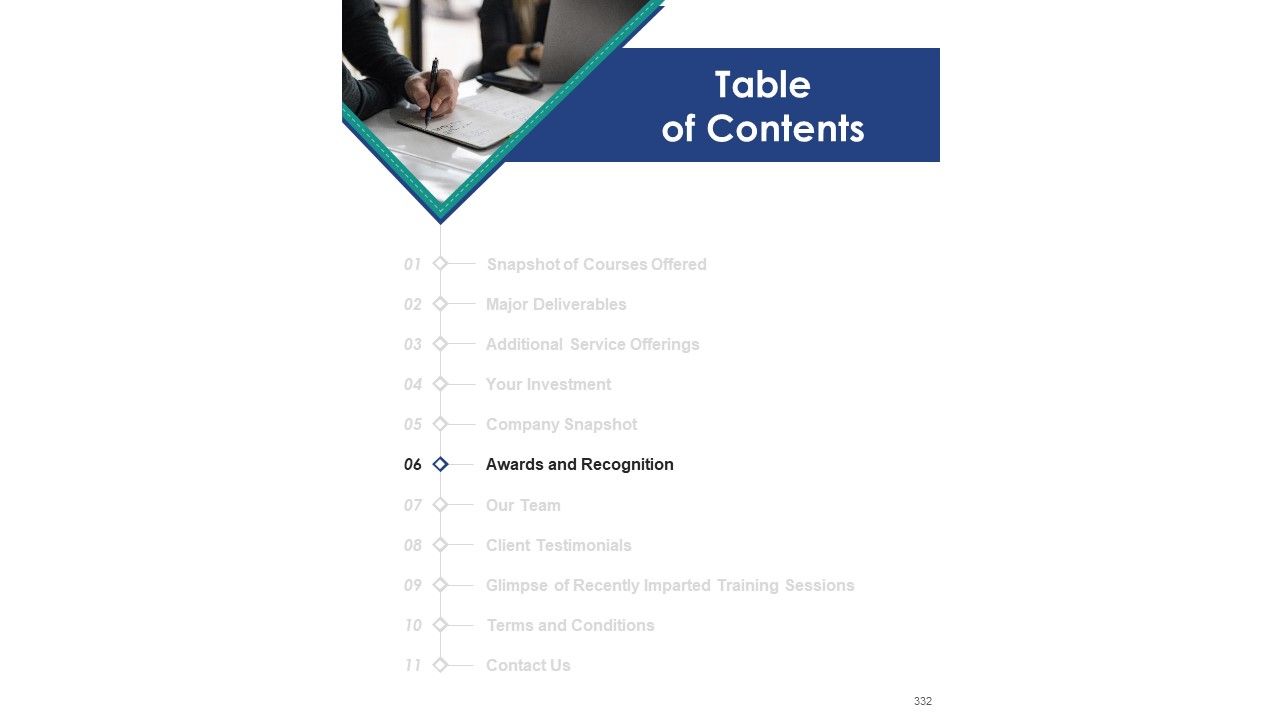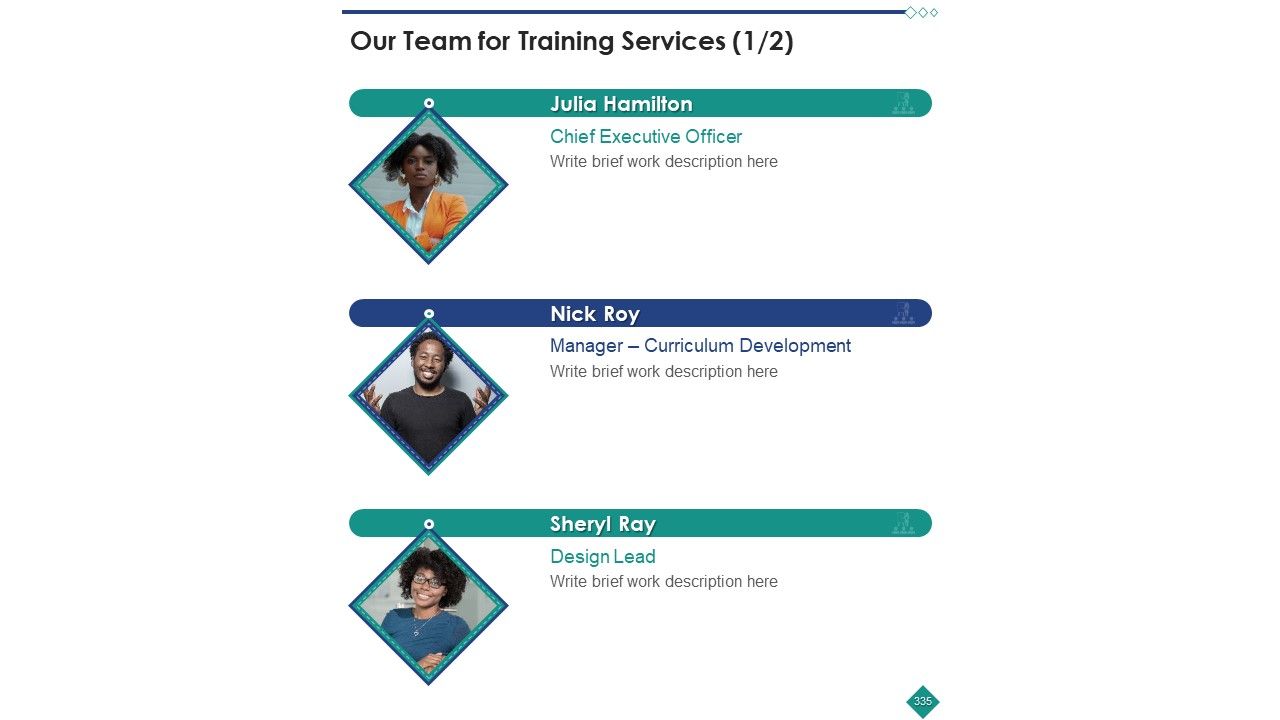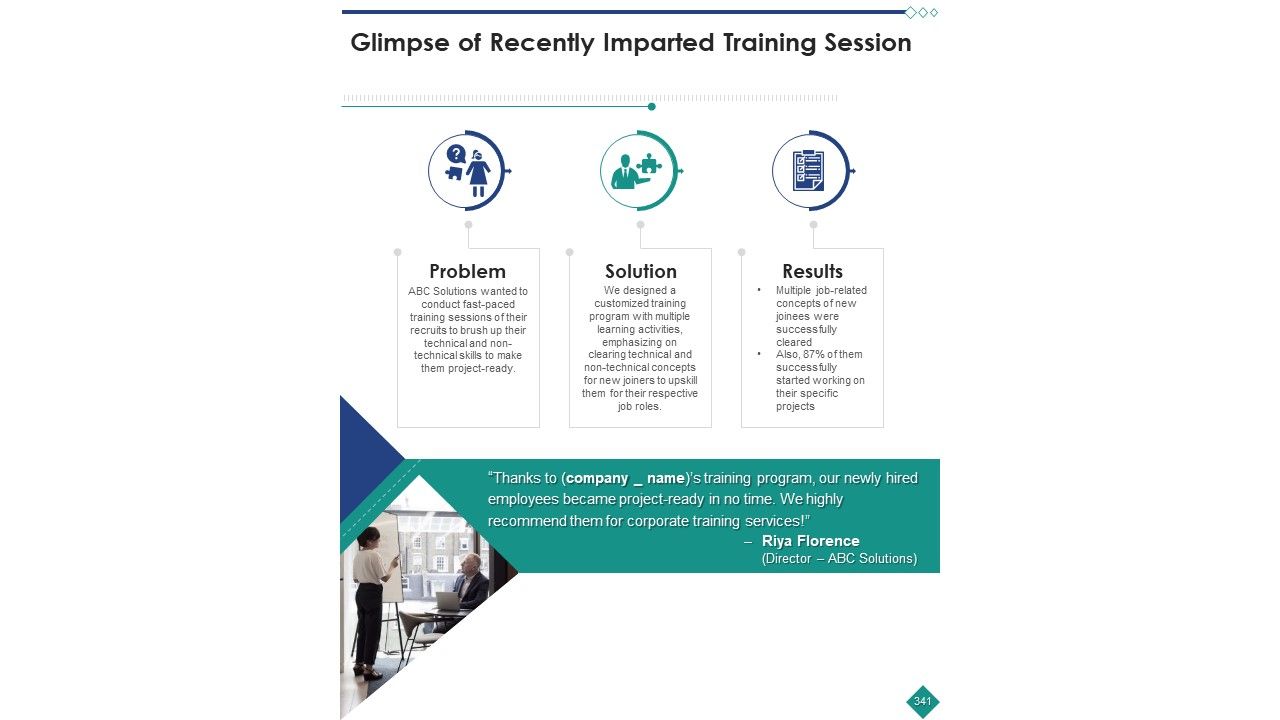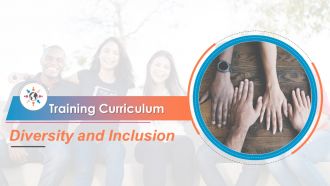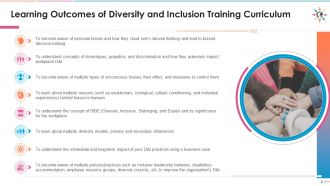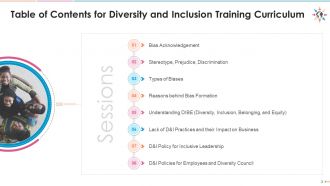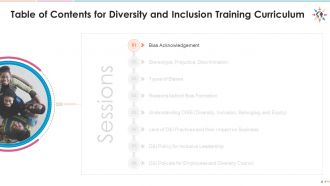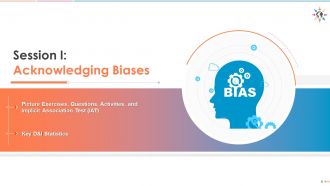Comprehensive diversity and inclusion training curriculum edu ppt
What is it
- EduDecks are professionally-created comprehensive decks that provide complete coverage of the subject under discussion
- These are also innovatively-designed for a powerful learning experience and maximum retention
Who is it for?
- EduDecks are for Trainers who want to add punch and flair to their program and leave a positive, lasting impact on their trainees
- They are also for Teachers who want to win over their students with content as well design
Why EduDecks?
- EduDecks provide an A-Z coverage of courses on any topic and covers it in both great depth and wide scope
- These slides are also professionally-designed to deliver a punch to your programs
Why Corporate Trainers love us?
- Content created by Industry experts, active in their fields
- Relevant concepts supplemented with industry case studies
- Visually appealing slides with 100% accurate & relevant data
Why Teachers love us?
- Comprehensive curriculum covering all aspects of the topic
- Relevant examples provided with the topics
- Just download and amaze your audience without making any content changes
What you will get
- 8 Structured Sessions
- 50+ Thought Provoking Questions
- 300+ Professionally Designed Slides
- 30+ Objective Type Questions
- Real Life Case Studies
- Detailed Instructor Notes
People who downloaded this PowerPoint presentation also viewed the following :
- Business Slides , Complete Decks , All Decks , HR , Training Modules , All Modules , Diversity , Diversity , Diversity , HR , Training Courses , All Courses , Diversity , HR , Edu Tech
Create an Immersive Training Experience
Created by Subject Matter Experts
Professionally Designed Slides
Structured Sessions
Comprehensive Curriculum
Detailed Teaching Notes
Real-Life Case Studies
Assessment Questions
Client Proposal
Complete Curriculum
Picture Exercises, Questions, Activities
- Picture Exercises 1
- Situation-Based Discussion Question
- Multiple Choice Questions
- Picture Exercises 2
- Situation-Based Discussion Question
- Multiple Choice Questions
- Picture Exercises 3
- Multiple Choice Questions
- Activity: Complete the Wheel
- Situation-Based Discussion Question
- Activity: Circle of Trust
- Unconscious Prejudice Activity: A Self-Reflective Questionnaire
- Implicit Association Test (IAT)
Key D&I Statistics
- Existing D&I across Globe
- Pay Parity, Gender, and Ethnicity in the USA
- Job Role and Race in the USA
- Impact of High D&I at Workplace
Discussion Questions
Stereotype
- Definition and Development
- Examples
- Adverse Effects
- Combating Stereotype Threats
- Memes
Prejudice
- Definition and Prevalent Prejudices
- Major Consequences
- Practices to Minimize Prejudices
- Memes
Discrimination
- Definition and Common Forms of Discrimination
- Damaging Consequences
- Preventive Measures
- Memes
Intergroup Relationship among Three
Key Takeaways
Discussion Questions
Objective Type Assessment Questions
Types of Unconscious Bias
- Confirmation Bias
- Definition
- How does it affect the workplace and how to control it?
- Affinity Bias
- Definition
- How does it affect the workplace and how to control it?
- Beauty Bias
- Definition
- How does it affect the workplace and how to control it?
- Conformity Bias
- Definition
- How does it affect the workplace and how to control it?
- Contrast Bias
- Definition
- How does it affect the workplace and how to control it?
- Gender Bias
- Definition
- How does it affect the workplace and how to control it?
- Sexual Bias and Misconceptions
- Definition
- How does it affect the workplace and how to control it?
- Attribution Bias
- Definition
- How does it affect the workplace and how to control it?
- The Halo Effect
- Definition
- How does it affect the workplace and how to control it?
- The Horns Effect
- Definition
- How does it affect the workplace and how to control it?
- Cultural Bias
- Definition
- How does it affect the workplace and how to control it?
Key Takeaways
Discussion Questions
Objective Type Assessment Questions
Evolutionary Reasons
Biological Reasons
- Brain Functioning
- Amygdala in Limbic System
- Automatic Nervous System
Cultural Conditioning
- Definition and Process
- Multiple Cultural Groups
Individual Experiences
Key Takeaways
Discussion Questions
Objective Type Assessment Questions
Diversity
Inclusion
Equality and Equity
Belonging
How DIBE Affects the Business
Benefits of DIBE in the Workplace
How Can You Get There?
A Process Model of Diversity
Primary and Secondary Dimensions
6 Question Approach to Understand Cultures/Hofstede’s Cultural Dimensions
4 Dimensions Approach
Achieving Excellence through Equity, Diversity, and Inclusion
Key Takeaways
Lack of D&I practices and their impact on Business
- Immediate impact of an event
- Starbucks Racial Incident
- What Would You Have Done?
- Immediate Damage Control by Starbucks
- Long-term Preventive Measures taken by Starbucks
- Long-term Impact on Business Due to Lack of D&I Practices
- General impact
- Impact within the organization
- Global impact
Impact of Good D&I in Business
Key Takeaways
Discussion Questions
Objective Type Assessment Questions
Pillar Framework for D&I
Golden and Platinum Rule
What is Inclusive Leadership?
Traits of Inclusive Leader
- Commitment
- Courage
- Cognizance
- Curiosity
- Culturally Intelligent
- Collaborative
Behavior of an Inclusive Leader
- Inclusive Leader Characteristics: Components and Behavior
- Don’ts of Inclusive Leader
Inclusive Leadership Competency Model
- Model
- Leads Self
- Leads Others
- Outcomes
Value Proposition for Inclusive Leadership
Organizational Impact of Inclusive Leadership
Key Takeaways
Discussion Questions
Objective Type Assessment Questions
Purpose of policy
Scope
Policy statement and requirements
What is included in Policy?
- Our Commitment
- Managers’ Responsibilities
- Employees’ Responsibilities
- Equal Opportunity
- Norms against Discriminatory Harassment and Bullying
- Norms against Sexual Harassment
- Employee Resource Groups
- ERG’s to company and Employees
- Benefits
- Manager’s Responsibilities, Eligibility and Participation
- Oversight and Administration
- What is Accommodation?
- Religious Accommodation and Requesting a Religious Accommodation
- Disabilities Accommodation
- What are Disabilities Accommodations?
- Requesting a Disabilities Accommodation
- How to Report Discrimination or Harassment
Diversity Councils
- What is Diversity Council?
- Framework for Diversity Council
- What does it Require for the Diversity Council to Succeed?
- Role and Responsibilities
- RACI Matrix for Diversity Council
- Key Takeaways
- Let’s Discuss
- Let’s Test What We Have Learnt
Sample Instructor Notes
This slide highlights the negative effects of stereotypes at the workplace, such as conflict, low morale, low productivity, poor employee retention, and litigation.
Instructor’s Notes:
- Conflicts:
- Stereotyping employees/colleagues instead of evaluating them on capabilities result in conflicts. Thus, making the workplace toxic
- Low Morale and Productivity:
- When constantly subjected to negative comments or criticisms due to stereotyping, employees lose motivation to perform allocated tasks
- Poor Employee Retention:
- Since stereotyping results in a non-supportive and non-inclusive environment, it leads to a high attrition rate in employees
- Non-Diversified Workforce
- Stereotyping results in a non-diversified workforce as it results in hiring, promoting, and retaining individuals with similar viewpoints, impacting overall creativity at the workplace
- Litigation:
- A frustrated and stereotyped employee can file a discrimination case in court which can adversely impact the organization’s brand image
This slide covers the details on Hofstede's cultural dimensions theory. It includes what is Hofstede's cultural dimensions theory and six cultural dimensions.
Instructor's Notes:
What is Hofstede's Cultural Dimensions Theory?
The collective mental programming differentiates members of one group or type of individuals from others (Geert Hofstede, Dutch Cultural Researcher). As a result, culture is a psychological program shared by many people with similar social experiences and education.
Different groups, nations, or regions of individuals will have different standard psychological programs because they have different education, culture, and employment, and hence have different ways of thinking.
Hofstede’s Six Cultural Dimensions Theory
Using questionnaires, Hofstede's team examined 72 nations (from 106 at the time). The final poll findings were separated into six main value aspects. Since the 1980s, this theory has been continually expanded and refined, becoming an essential reference for numerous studies and assessments of human behavior in nations.
The six dimensions are:
- Power Distance: It is defined as the acceptance of power control by a society's inhabitants: The higher the score, the higher the acceptance
- Individualism vs. Collectivism: Society as a whole can be concerned either with the interests of individuals or the collective interests. The higher the score, the greater the value placed on Individualism
- Masculinity / Femininity: It is mostly determined by males' and females' social leadership abilities—the greater the score, the more noticeable the Masculinity. On the contrary, it shows that society's femininity is exceptional.
- Uncertainty Avoidance: It refers to a society's ability to prevent the occurrence of unknown events, whether by attempting to influence the future or by letting it happen and accepting the future. The higher the score, the greater the likelihood of avoiding uncertain events
- Long Term Orientation: It refers to the willingness of people of a society to postpone satisfaction of their financial, emotional, and social demands. The greater the score, the more vital it is to prioritize the long term above the immediate term
- Indulgence/Restraint: It relates to the extent to which a society accommodates people's fundamental necessities as well as their desire to enjoy life and pleasure. The greater the value, the less constraining the society's hold on its members and the more permitted it is to indulge
This slide covers a process model diversity diagram including dimensions of diversity, interpersonal processes and group dynamics, task-relevant processes, decision making, and outcomes
Instructor's Notes:
(Path A) This negative correlation ultimately results in adverse outcomes because of the positive relationship between the quality of interpersonal processes and group dynamics with outcomes (path C)
E.g.: gender and racial diversity in a workgroup foster more interpersonal conflict, resulting in lower job satisfaction, higher turnover, and lower productivity.
According to studies on the information/decision-making theory, the degree of diversity in a workgroup is related to task-relevant processes and decision-making (Path B), which leads to favorable outcomes (Path D).
In this scenario, gender and racial diversity result in beneficial outcomes because it improves task-related processes and decision-making.
The purpose of this slide is to highlight the impact of good D&I in business, such as a bigger talent pool, increased employee engagement and trust, new perspectives and innovation, better decision-making, and improved performance.
Instructor's Notes:
- Bigger talent pool: A bigger talent pool means expanding the recruitment searches to more diverse candidates, including background, ethnicity, age, etc. It widens the talent pool and increases the chances of finding the best hire
- Increased employee engagement and trust: Employees are more engaged when they feel involved. Employees that are highly engaged go the extra mile for the organization. The increased involvement has a ripple impact on revenue, employee morale, and retention
- New perspectives and innovation: The most diverse enterprises in migration, industry, career path, gender, education, age are also the most innovative. Their revenue mix can measure it
- Better decision-making: Diverse teams have a 60% more improvement in decision-making. In particular, gender-diverse teams outperformed individual decision-makers 73% of the time. Groups diverse in geography, gender, and age made better business decisions than individuals 87%
- Improved performance: Gender diversity increased by 10%, while EBIT increased by 3.5 percent. Companies with considerably greater racial and cultural diversity outperform competitors by 35%
- Stronger business results and profits: Diversity and inclusiveness are helpful to employees' mental health, but they also have positive business effects. Businesses that rank in the top quartile for racial, ethnic, and gender diversity are 25 percent more profitable
This slide provides information regarding the definition of inclusive leadership. It also contains details of major characteristics of an inclusive leader such as cognizance, curiosity, cultural intelligence, collaboration, commitment, and courage.
Instructor’s Notes:
The key traits of inclusive leaders are:
- Commitment: They exhibit a strong sense of personal responsibility for change to make the work environment rich in diversity and inclusion by regularly challenging the status quo and introducing D&I policies
- Courage: They don't shy away from sharing their opinions (even if politically or culturally unpopular) to achieve better diversity and inclusion at the organization. Also, they have the humility to accept their shortcomings and eagerly seek help from others to overcome them
- Cognizance: They are well aware of their own biases and the organization's limitations and always exert considerable efforts to avoid making subjective decisions to ensure "fair play“
- Curiosity: They have an open mindset and listen to other's perspectives to minimize their blind spots and improve decision-making
- Cultural Intelligence: They have awareness regarding the cultural practices of others and quickly change their management style to accommodate different cultural norms
- Collaboration: They promote diverse thinking and ensure team composition & processes are focused on achieving better cohesiveness
The purpose of this slide is to provide information regarding the diversity council. It also provides details regarding multiple responsibilities of diversity councils such as creation of D&I strategy, identify and minimize D&I barriers, embedding of D&I functions, creation and sharing of D&I content and measure impact of D&I initiatives.
Instructor’s Notes:
The major responsibilities of diversity council are listed below:
- Creation of D&I Strategy: Assisting CEO in the drafting of organization's D&I strategy
- Identify and Minimize D&I Barriers: Identifying multiple D&I barriers in various business processes and formulating strategies to minimize them
- Embedding of D&I Functions: Ensuring proper embedding of D&I functions across all business units and operational divisions
- Creation and Sharing of D&I Content: Creating D&I content and sharing with employees for learning
- Measure Impact of D&I Initiatives: Measuring the impact of D&I initiatives by making employees accountable for performance
FAQs
We provide training decks on a wide variety of business and technical topics such as Diversity & Inclusion, Customer Service, Search Engine Optimization, Blockchain Technology, and many more. These are ready-to-present decks that can be downloaded and presented in their current form. These decks are carefully created by industry experts, designed by professionals to deliver a power packed training session.
We want our training decks to evoke curiosity and inspire passion for learning. Each training deck consists of multiple sessions with impeccably designed slides to explain concepts in-depth, key takeaways to summarize sessions, discussions, and multiple-choice questions to assess trainees’ learning. The deck also contains activities and memes to break the monotony and make the training more interactive. Each training deck comes with an assessment form and editable proposal to help pitch your training to clients with success.
It depends on the trainer's content delivery pace, but each deck is created to ensure that training content is for a minimum of 16 hours.
Yes. A significant segment of our customers are professional mentors, coaches and teachers. You can create presentations with our content and distribute these to your trainees. The only caveat is that you cannot share your subscription to our content with others; the license is not transferable. Also, you cannot resell SlideTeam content to others.
Each slide is 100% editable in PowerPoint. Every element of the slide – text, icons, images, vectors, color scheme, etc. can be modified to build an effective PowerPoint presentation. Simply DOWNLOAD, EDIT, and PRESENT!
All PPT slides are compatible with PowerPoint 2007 and above. Some diagrams will not show up correctly with older versions of PowerPoint, like PowerPoint 2003 or lower, because of rendering issues. Yes, they work with PowerPoint for MAC, and decks are compatible with Google Slides too.
Absolutely yes! Our decks are yours to keep and build upon even after your subscription expires. You will not be able to download any additional decks once your subscription expires, but the ones you've downloaded are yours to keep forever.
Our entire website is HTTPS secure, and our payment system is managed by PayPal and Stripe, two of the world's leaders in credit card payment systems and very respected companies in online payments. This makes our systems 100% secure. We do not store or have access to any credit card information ourselves. We direct you to these third-party secure sites with 100% secure SSL connections where you can safely purchase a subscription and then direct you back to our site to download products.
You are allowed to log in and download content from 3 computers. Our website keeps track of login IP addresses, MAC Address Usage, and Browser and Computer Operating System fingerprinting, and you will not be able to log in from more than three computers.








